We’ve saved the biggest for last: Belfast, population 650,000 out of 1.9 million in Northern Ireland. But Dublin, the capitol of the Republic of Ireland has 1.3 million out of a total Republic population of 5.5 million.
Nonetheless, Belfast has, for me and our limited exposure as one-day tourists, more of a big-city feel than Dublin. There are more glass and steel and certainly more Victorian, Georgian and Edwardian buildings. There is no doubt in my mind that the Brits built Belfast and the Irish built Dublin.
First up this morning was a brisk walk across the Lagan River on the modern pedestrian bridge and up the river to Titanic Belfast attraction. What? Another Titanic museum? Good point. Judy and I have seen Titanic stuff in Halifax, Tampa, Cobh and other placs I’ve forgotten. This one, opened in 2012, is a modern, high tech, self-guided walk through with videos, photographs, dramatic lighting and music. Almost too much for senior citizens’ addled minds, perhaps.
The good thing about Titanic Belfast is that it focuses more than 50% on Belfast and its role in building the ship. The site overlooks the site where the twin dry docks used for the construction of the Titanic and its sister ship, the Olympic. The Titanic was mankind’s largest moving creation in its day and represented the latest technology in ship construction.
The other half of the exhibition focused, of course, on the tragedy and its aftermath. There is considerable detail of the Ballard discovery and documentation of the wreck on the sea bottom.
We had a half hour to spare before our next event, which we filled with Chai Latte and croissants, etc.
At 12:15 sharp, Eamonn Mcguckin pulled up, discharged his 10 AM tour group and took us on for a Black Taxi tour of segregated Belfast and the Troubles and its impact on the city.
We visited the Shankill neighborhood where a large wall painting celebrated the life of Stevie “Top Gun” McKeag. He was a leader in the Ulster Defence Association (UDA), one of many pro-union/anti-catholic groups of The Troubles period. McKeag is said to responsible for at least 12 killings of random Catholic citizens in retaliation for IRA killings of Protestants.
Many other neighborhoods on both sides of the wall have similar shrines to this one, commemorating local heroes.
The houses on this street were the subject of multiple bombings from the Catholic neighborhood on the other side of the “Peace Wall” that runs through the neighborhood. The houses have been rebuilt, but with protective screens on their wall side to deflect bombs.
The Peace Wall was built during The Troubles to isolate Protestant and Catholic neighborhoods with the hope of reducing inter-faith violence. In Belfast, there are at least 59 walls spanning 21 miles. Some are as high as 25 feet, with a solid structure maybe 8 to 10 feet high with fencing above to prevent bombs from being tossed across.
Peace walls have openings that permit people and cars to pass, but these are controlled by the police and are closed during nighttime hours.
I asked Eamonn if the walls could come down. He doesn’t think they can because, while most Belfast citizens are peaceful, there are radicals on both sides of the walls who are deterred from violence by the walls.
We stopped by one section of a wall (which have become a major tourist attraction) where graffiti paintings stretch from one end to the other. People frequently paint over old images with new ones. Others make written comments with felt-tipped markers, as did we.
Eamonn dropped us off in front of the Belfast City Hall, an imposing structure, at 1:30 PM. The Ivy restaurant across the street looked promising, but we walked around the block to see if we could find something a little less pretentious. But Judy spotted Shepard’s Pie on the menu and so by 2 PM, what has become our normal lunch time, we were tucking into three pies, with drinks, followed by decadent desserts. “Eat, drink and make merry, for tomorrow we diet,” I commented to the bemused local couple sitting at the next table.
We stuck our head into the City Hall briefly, since a fee was charged for a more complete tour. There were stained glass windows which, to me, gave an insight to local attitudes. They were dedicated to events and groups important to the city.
For instance, the Ulster Defence Regiment was a unit of the British Army. While originally formed as an integrated Protestant-Catholic peacekeeping force, it evolved to be predominantly Protestant and is said to have committed murders of Catholics.
The British Army has a window for its role starting in 1969. In Derry, we were told that the Bloody Sunday murders were committed by members of the British Army.
The Royal Ulster Constabulary was the police force formed at Partition. Largely Protestant, it suffered over 300 casualties during the Troubles. They were heavily armed and accused of police brutality.
There were also windows commemorating the dock workers’ strike of 1906, Famine victims and gay rights.
I asked Eamonn if he thought there would ever be a united Irish island. He said, “Like most questions in Ireland, there are two answers. The Protestant Unionists would say ‘never.’ Catholics would say ‘yes, it’s coming soon’.” While we saw many wall slogans and murals that indicated a desire for peace and harmony between the two camps, there are still plenty of signs of defiance on both sides.
We hiked home and are getting packed up. Maybe we’ll go for a last fish and chips, or maybe not. Lunch was pretty filling. The lounge at the airport offers a full Irish breakfast.
Oops, Judy and I succumbed to a tapas joint – the only thing going near by except a bunch of bars. The Irish stop eating and start drinking about five PM, for what we can see. Nancy was good and stayed home..
So home we come, fat, not quite as dumb as we started, and happy.
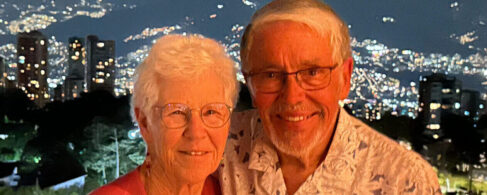
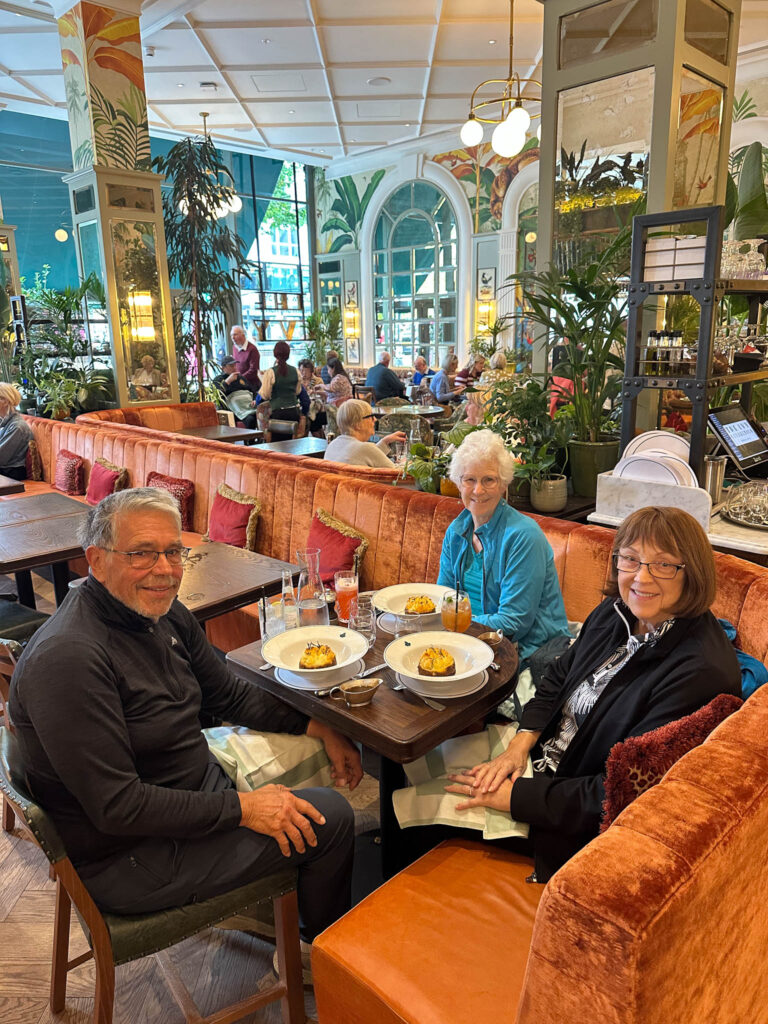
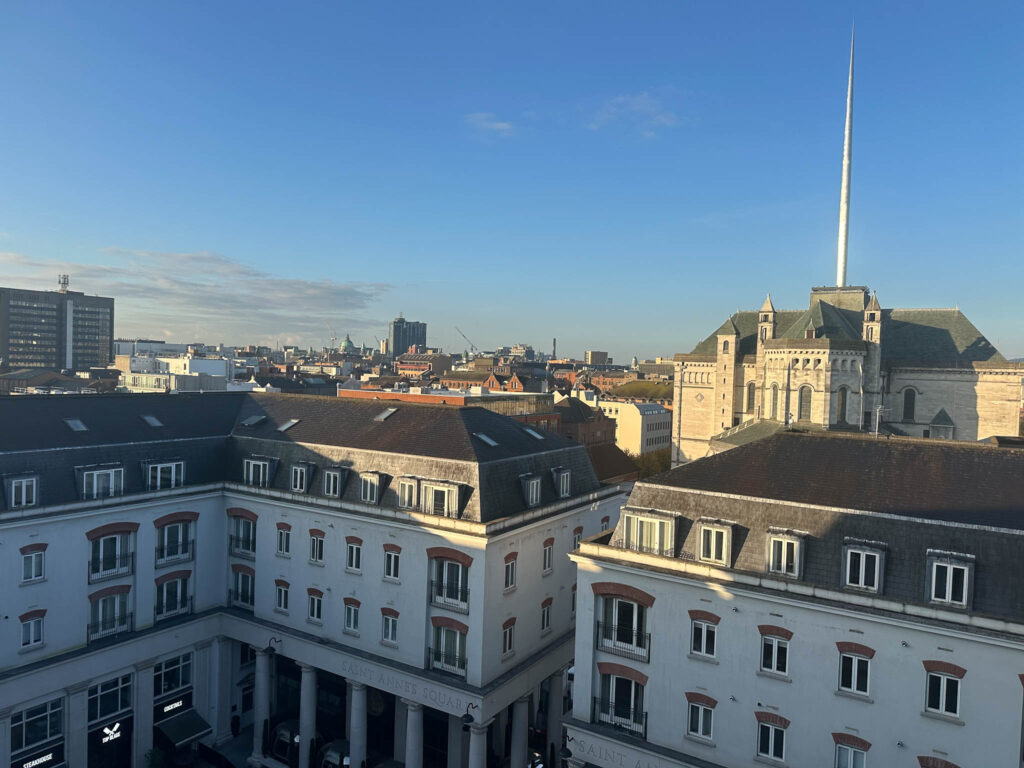
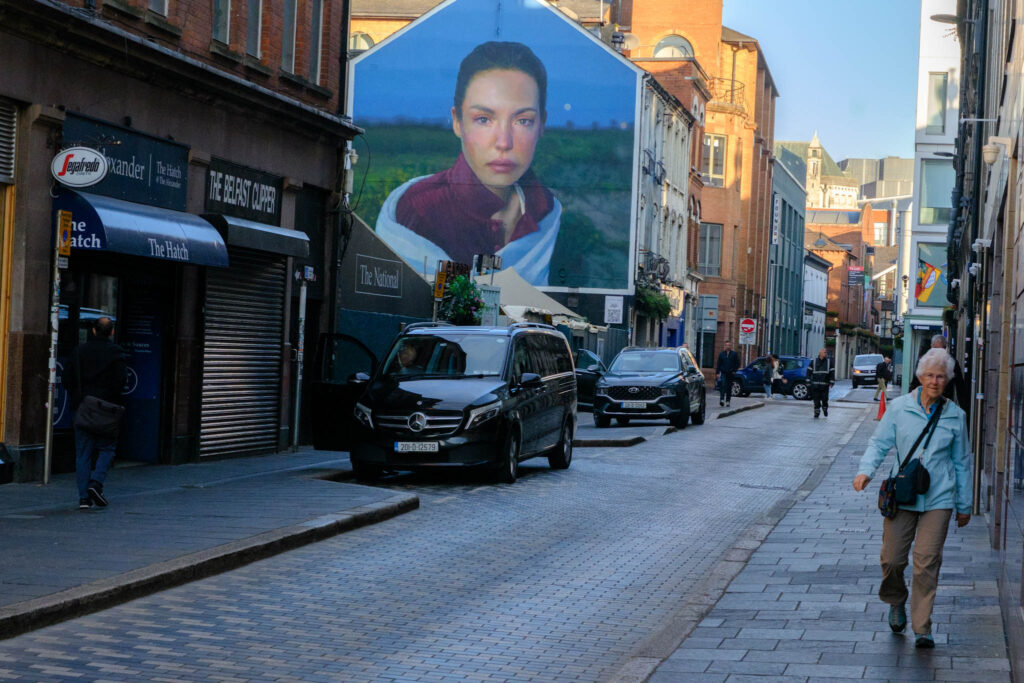
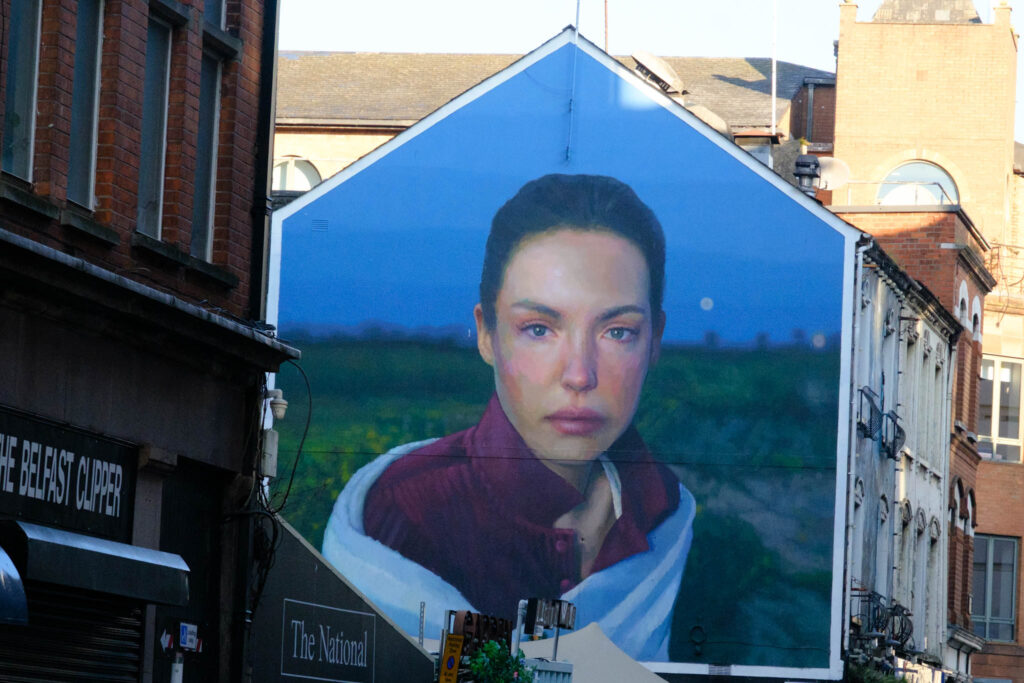
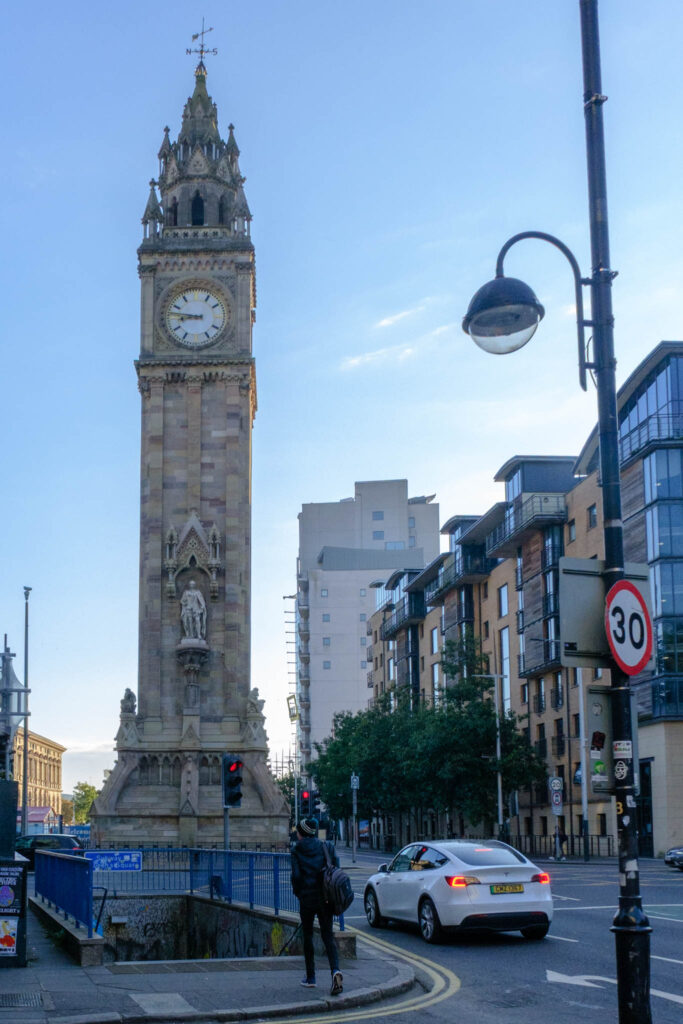
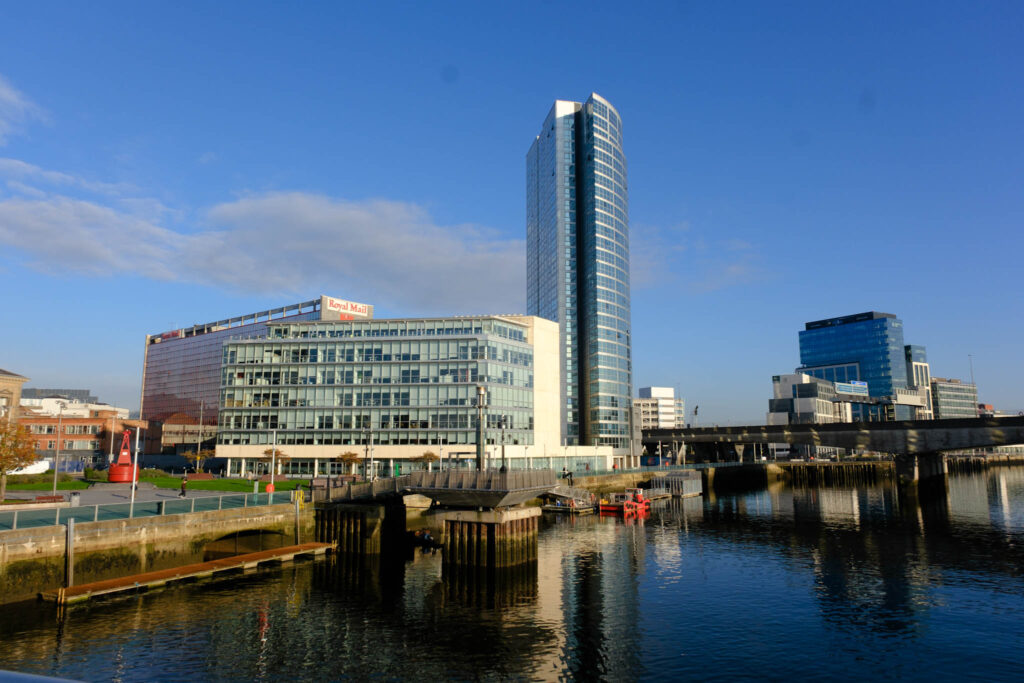
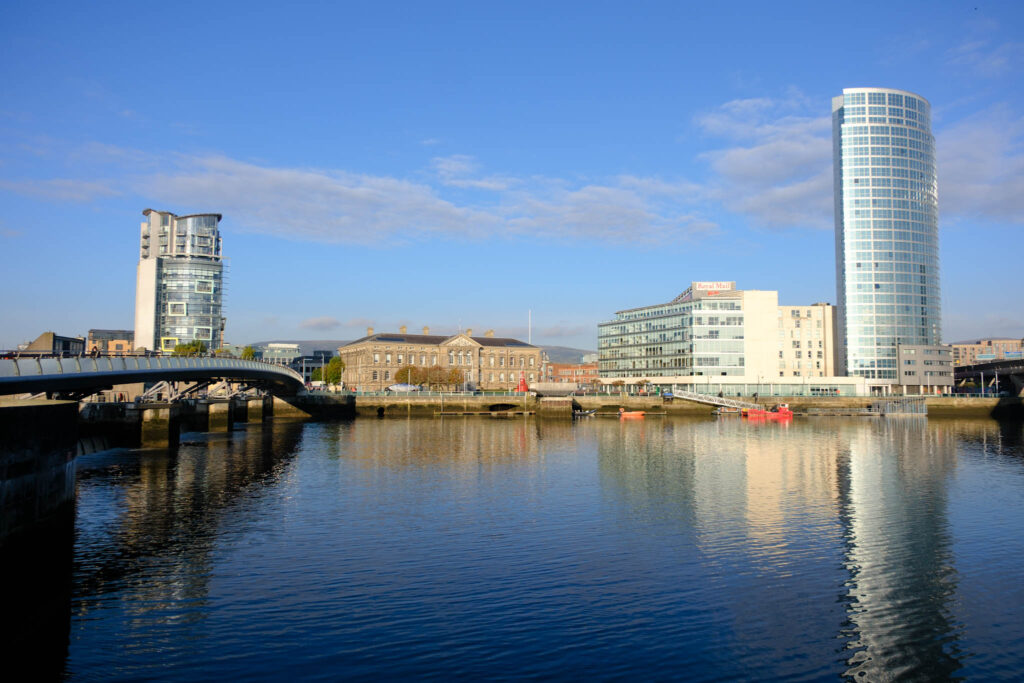
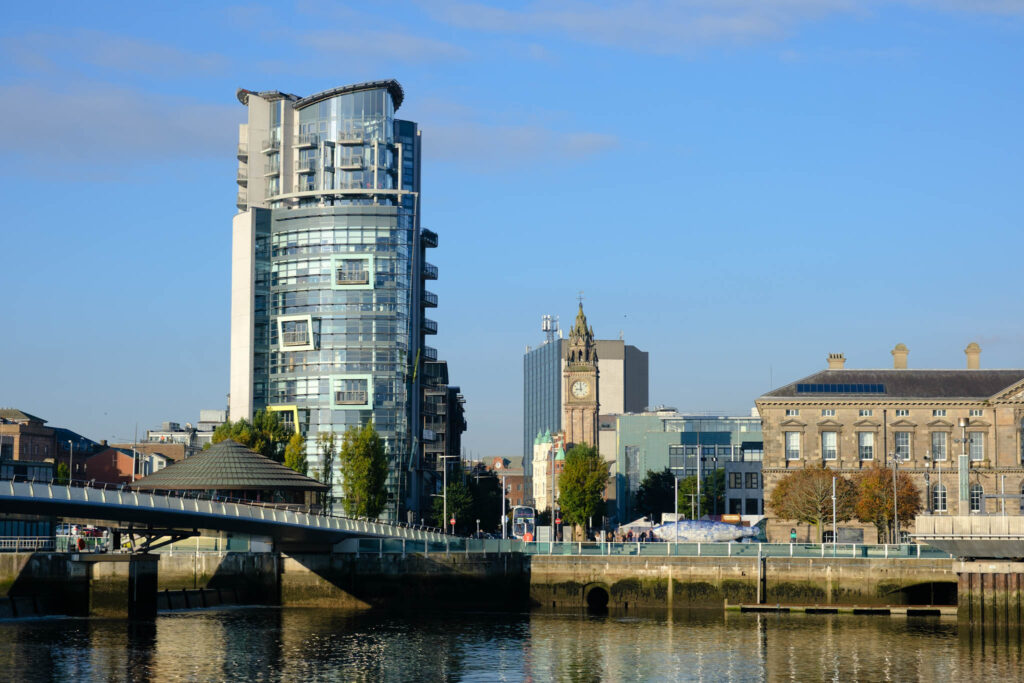
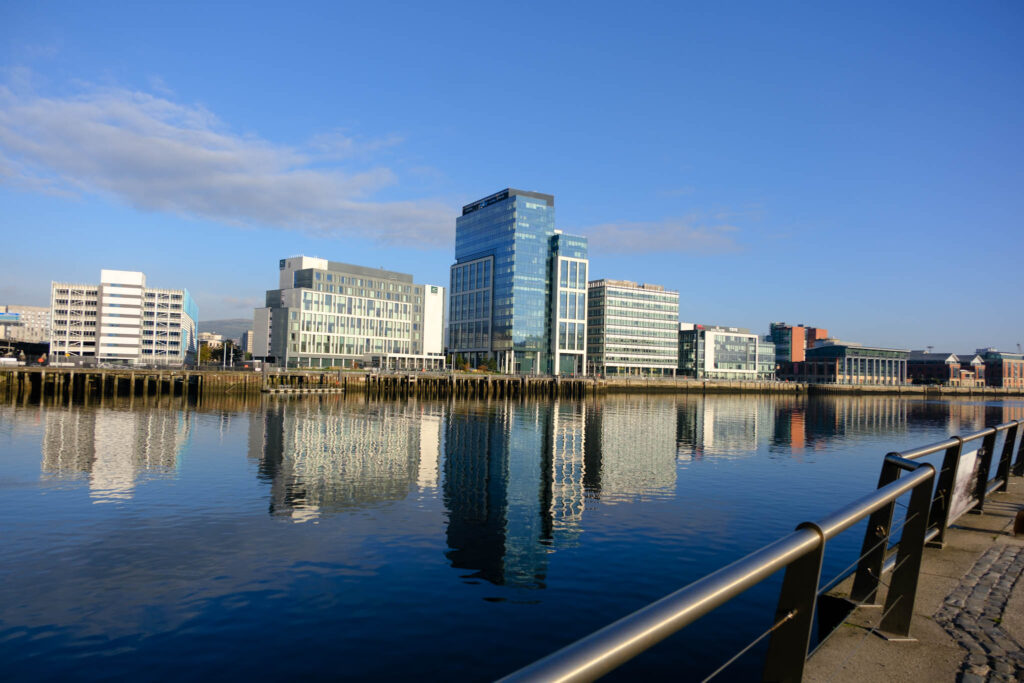
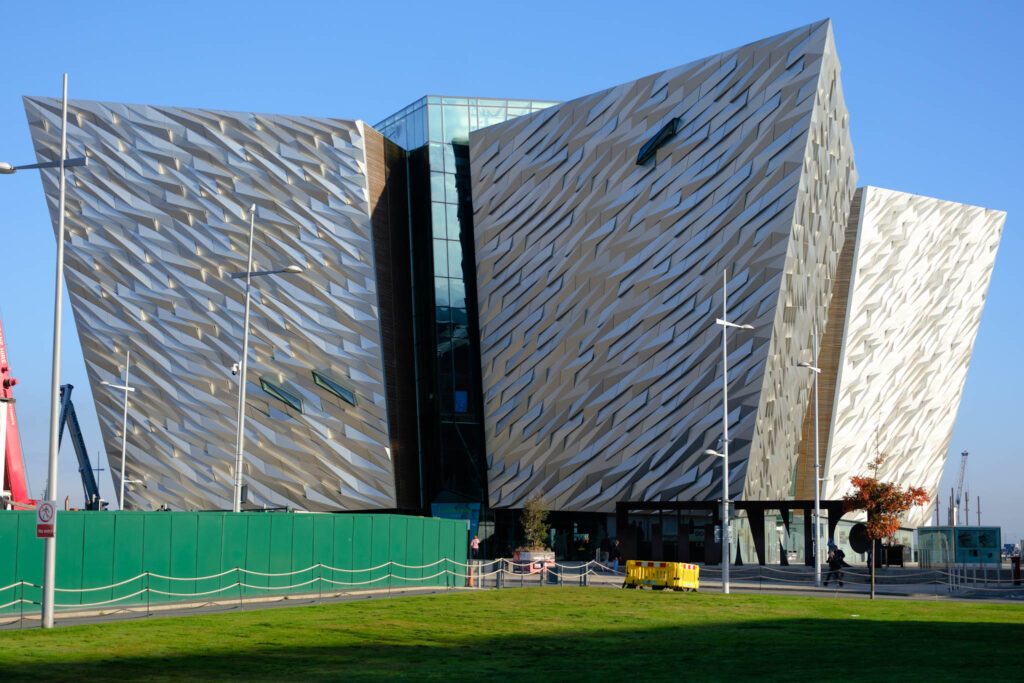
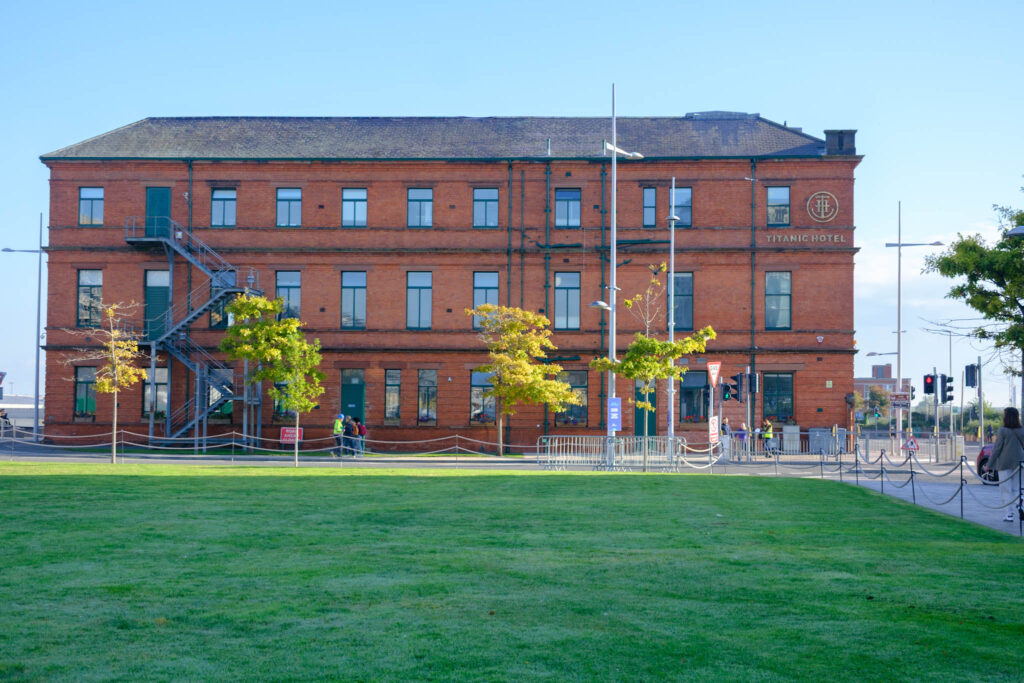
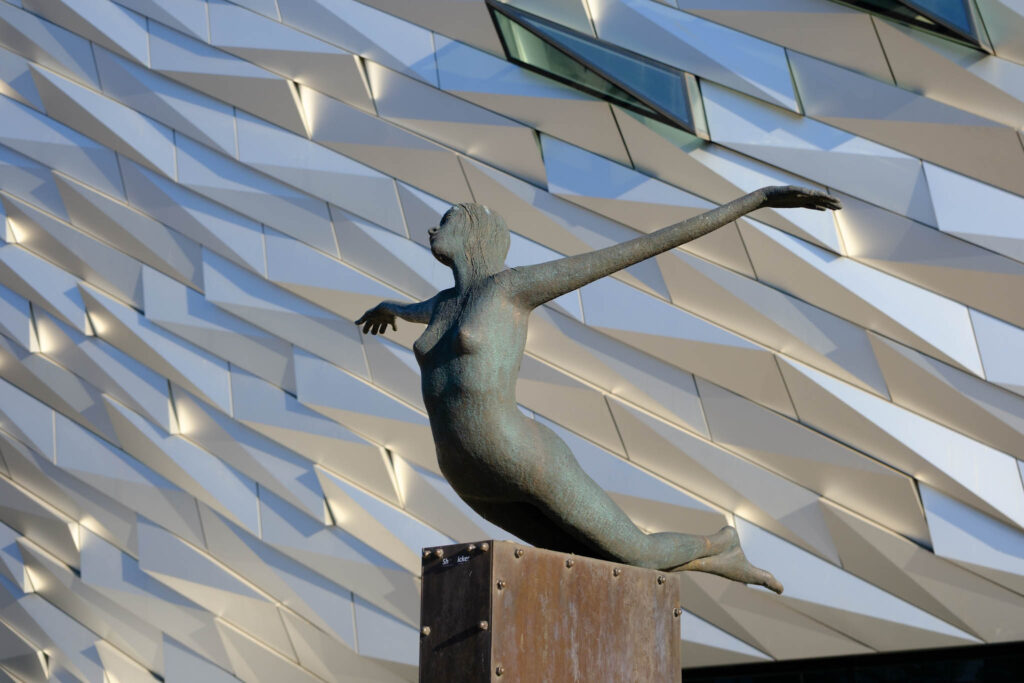

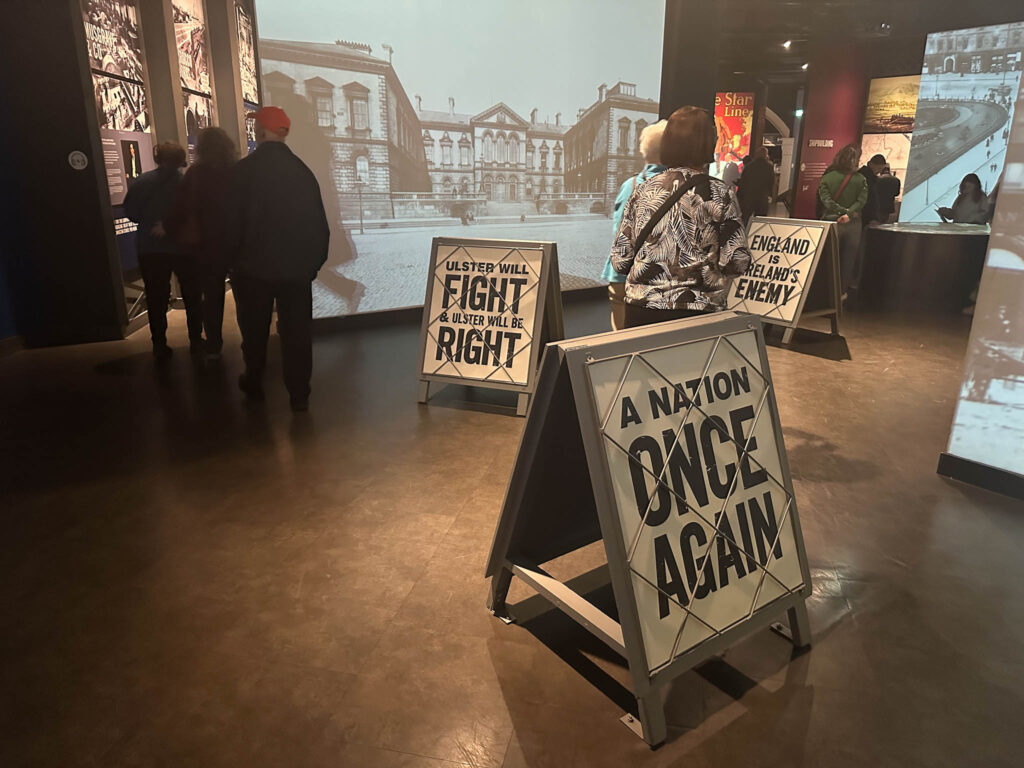
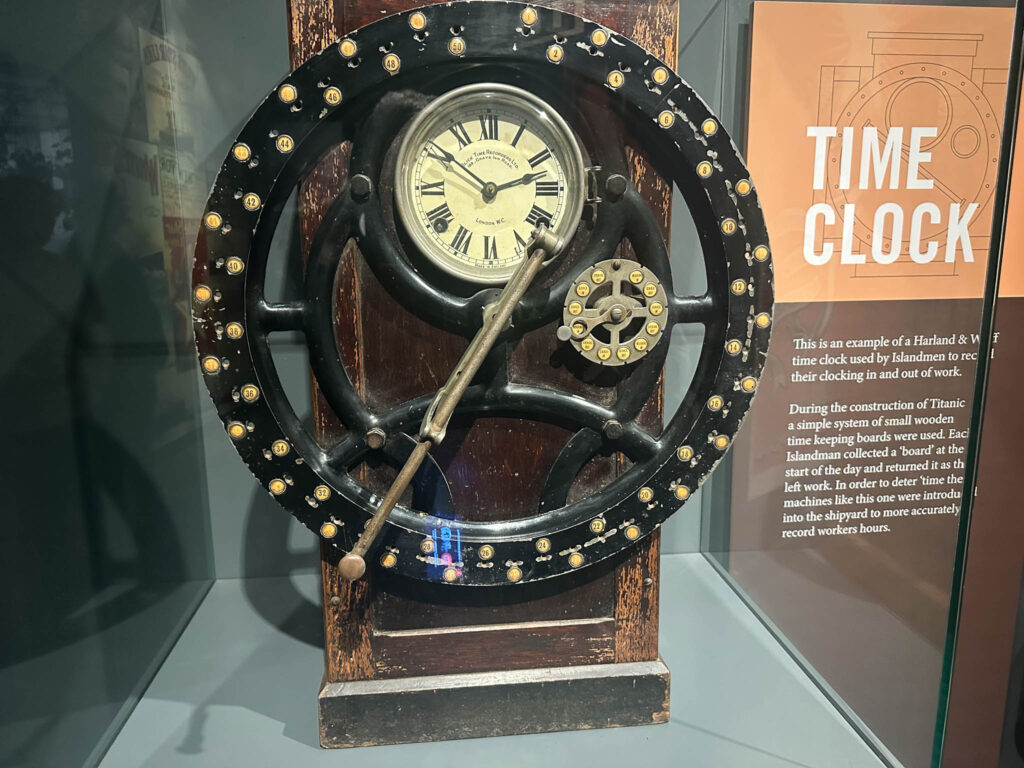
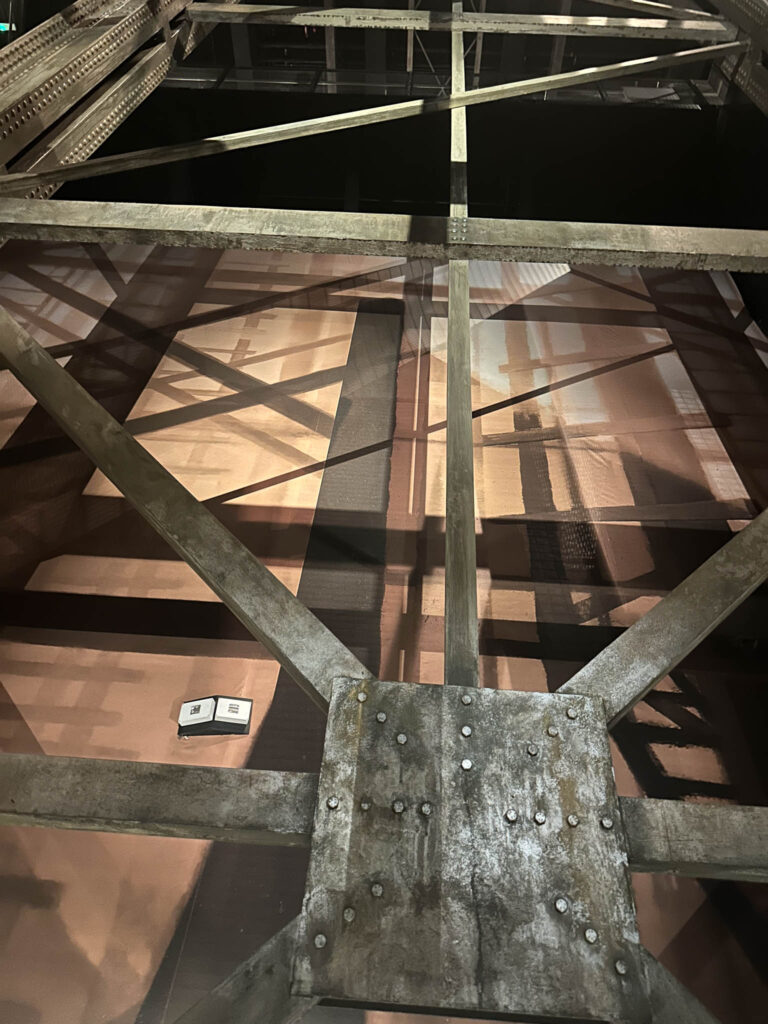
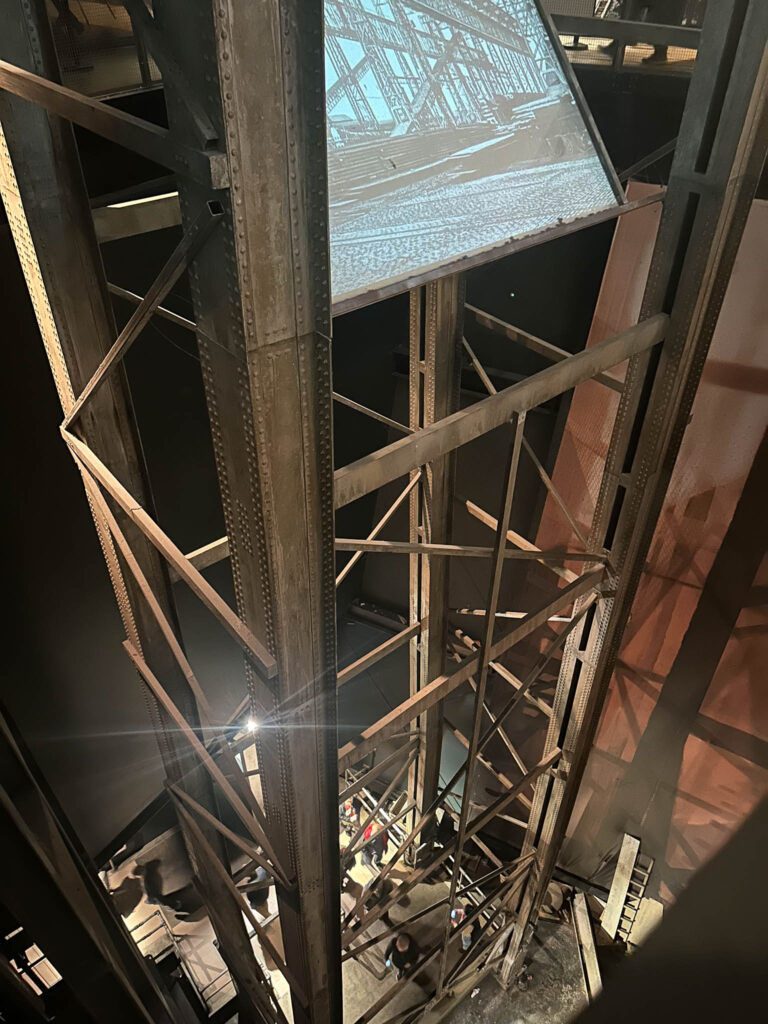
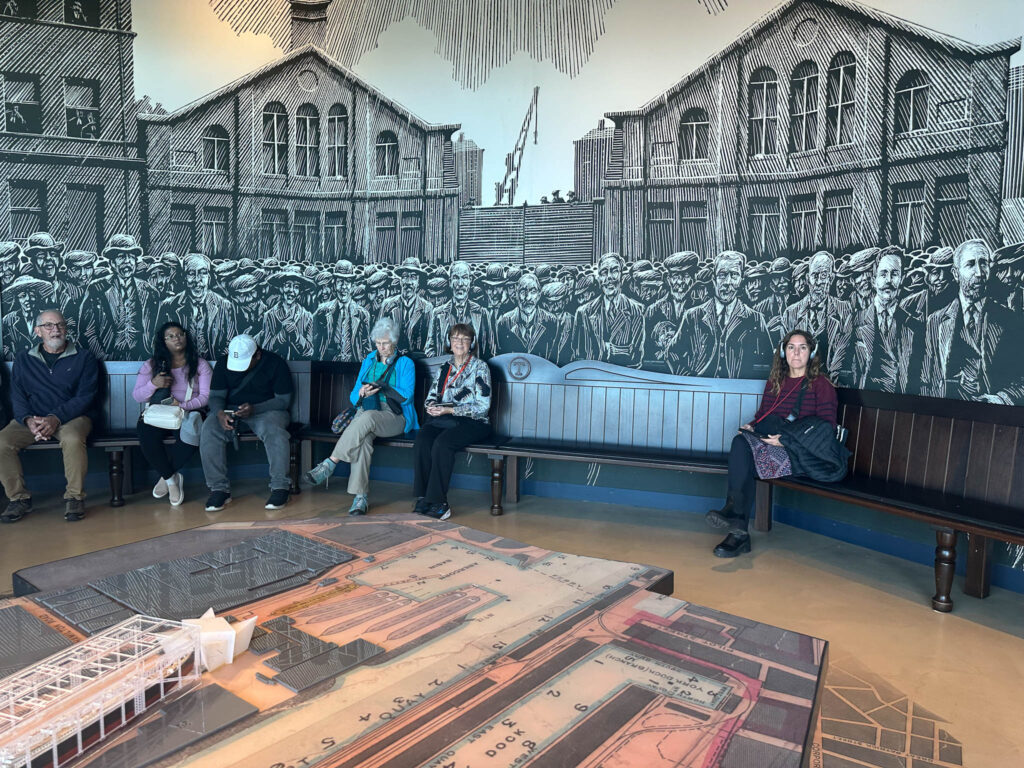
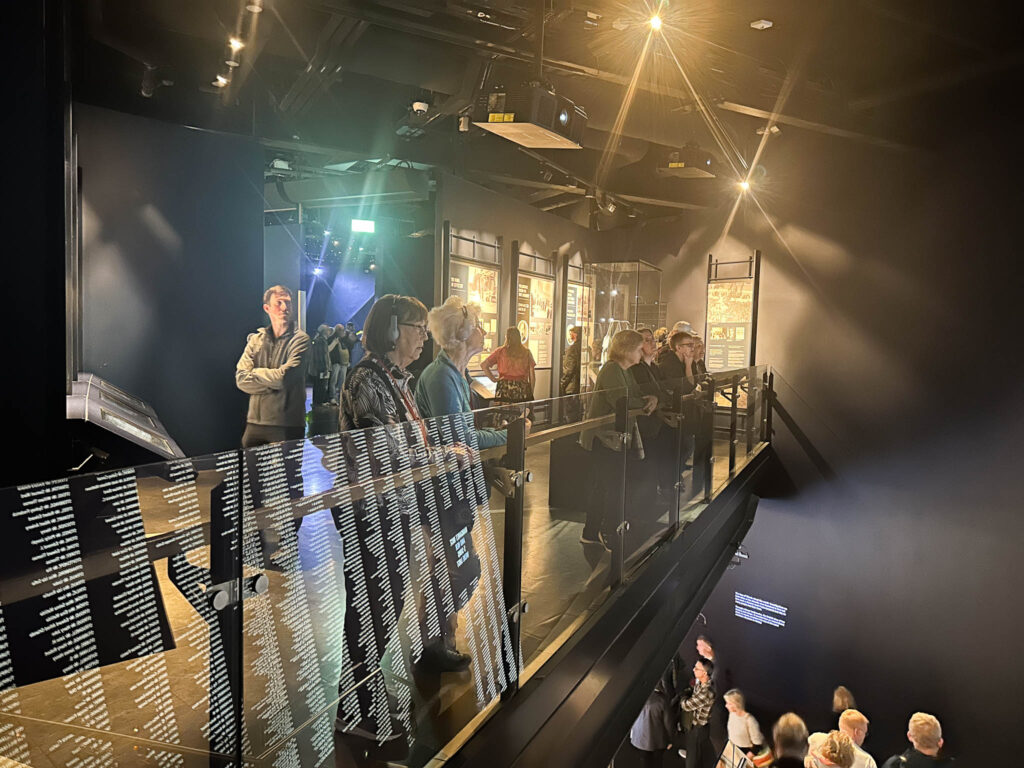
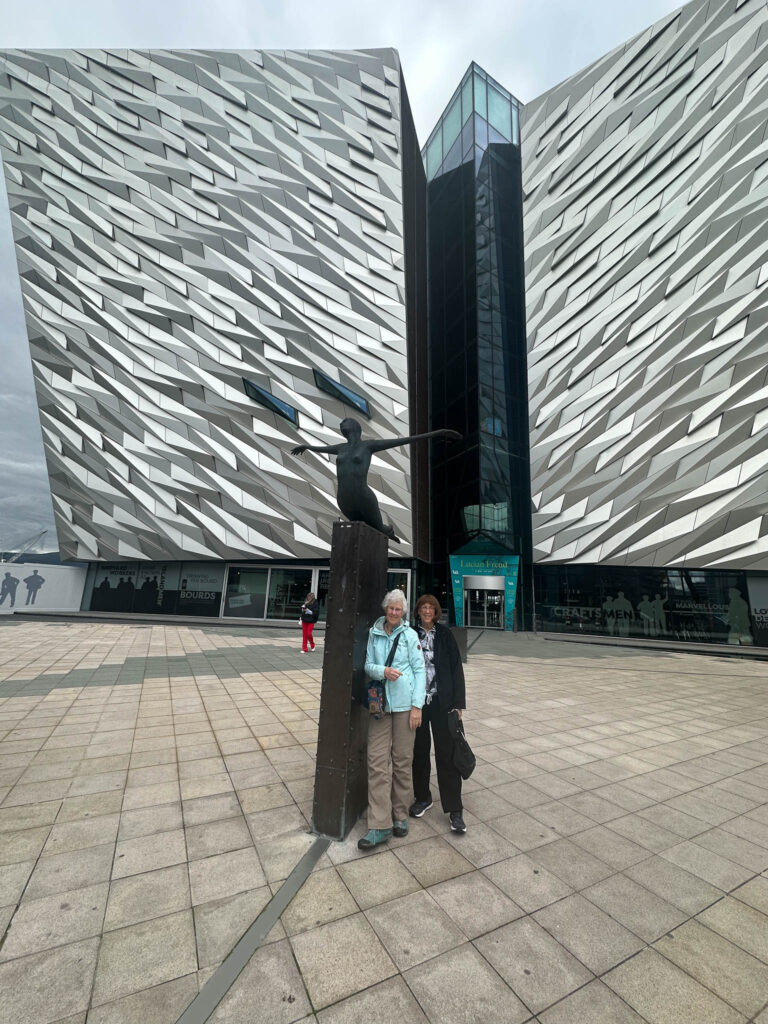
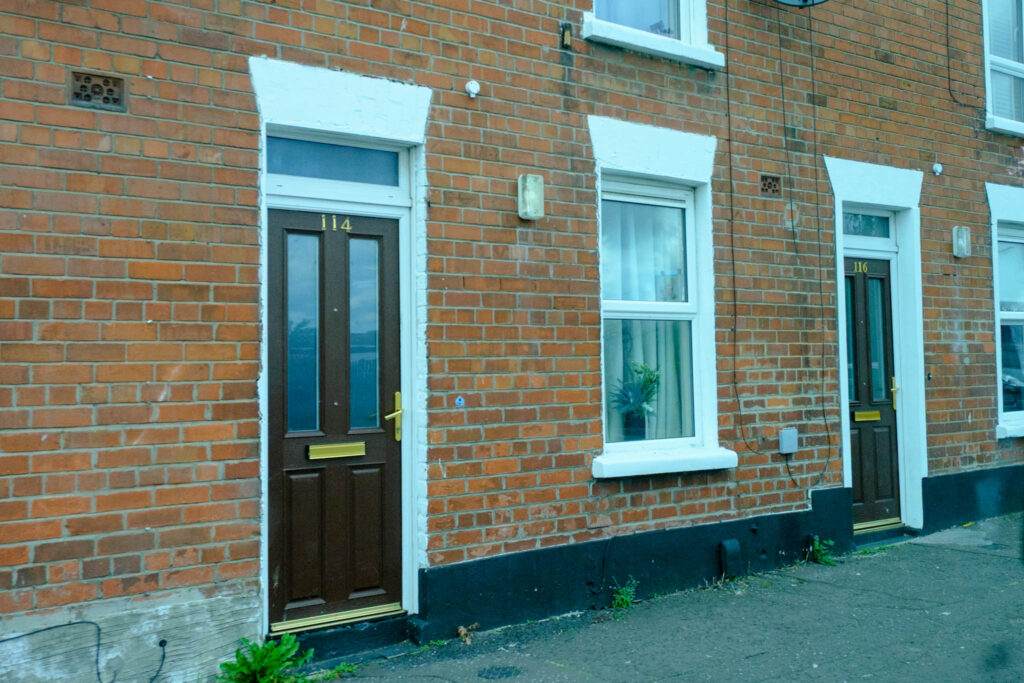
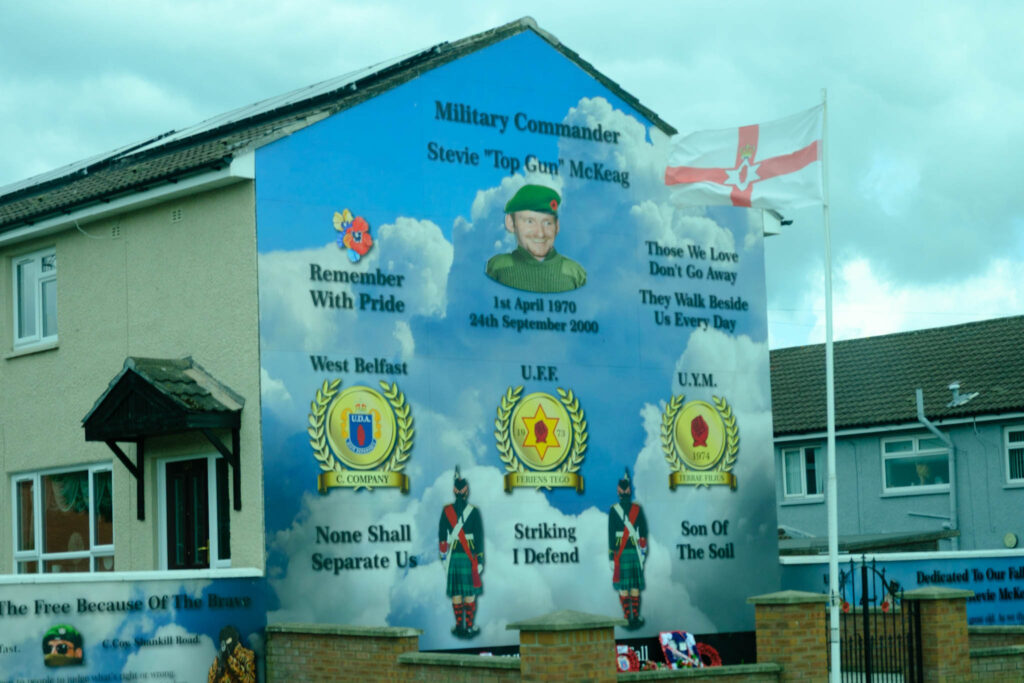
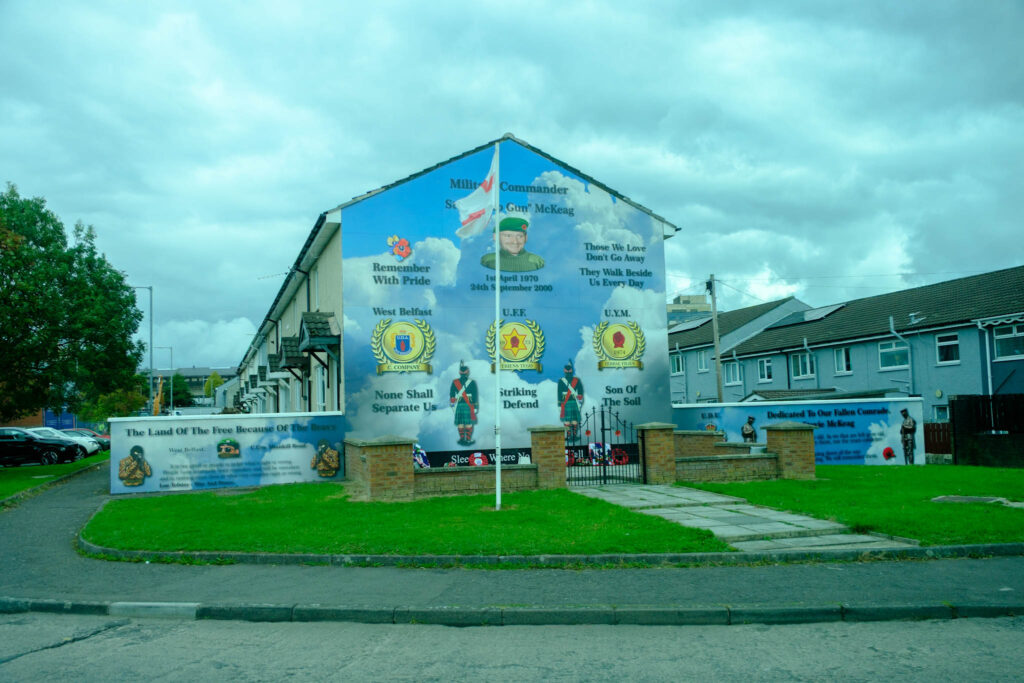
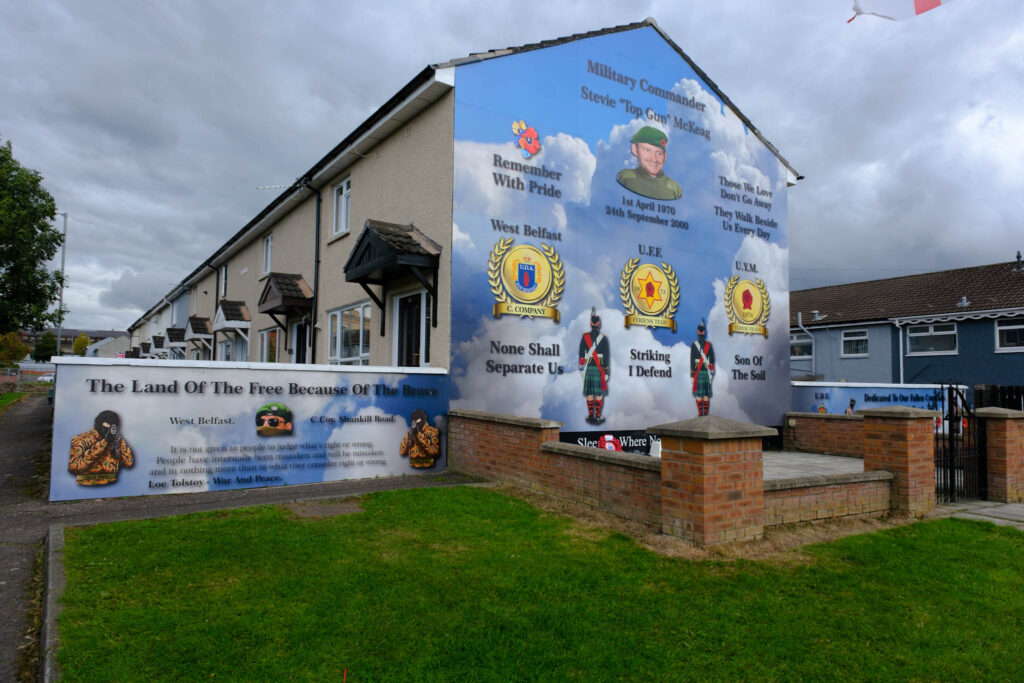
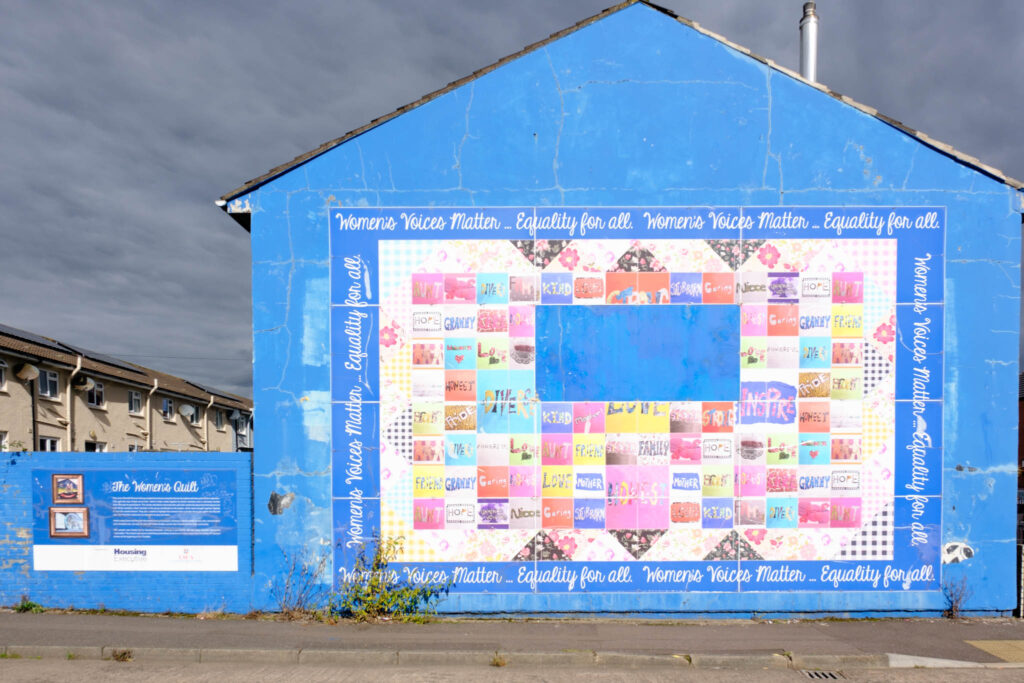
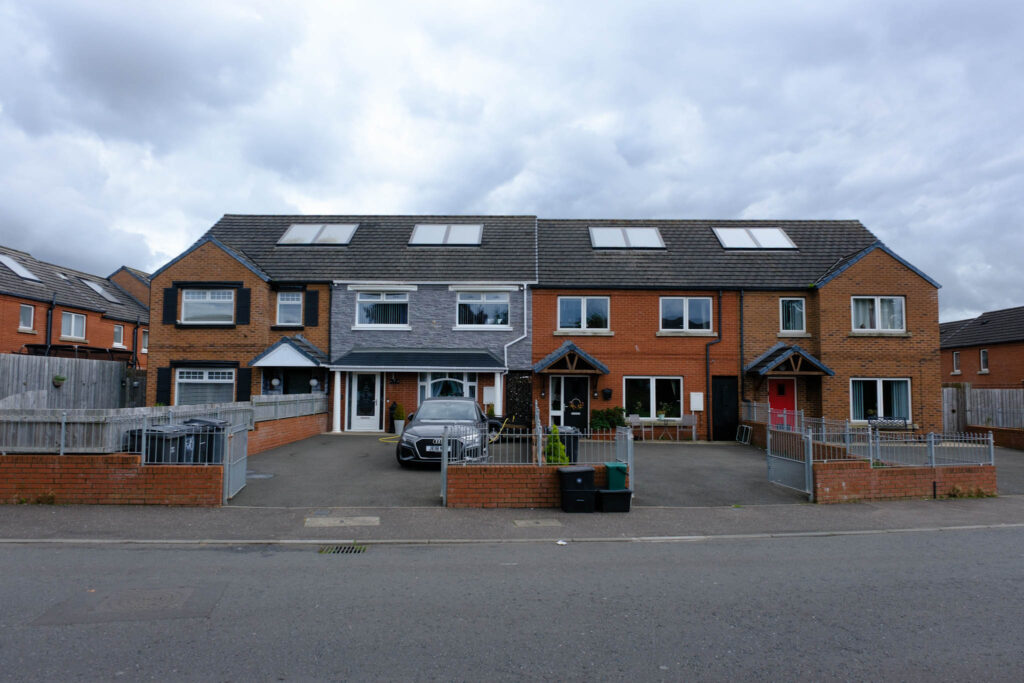
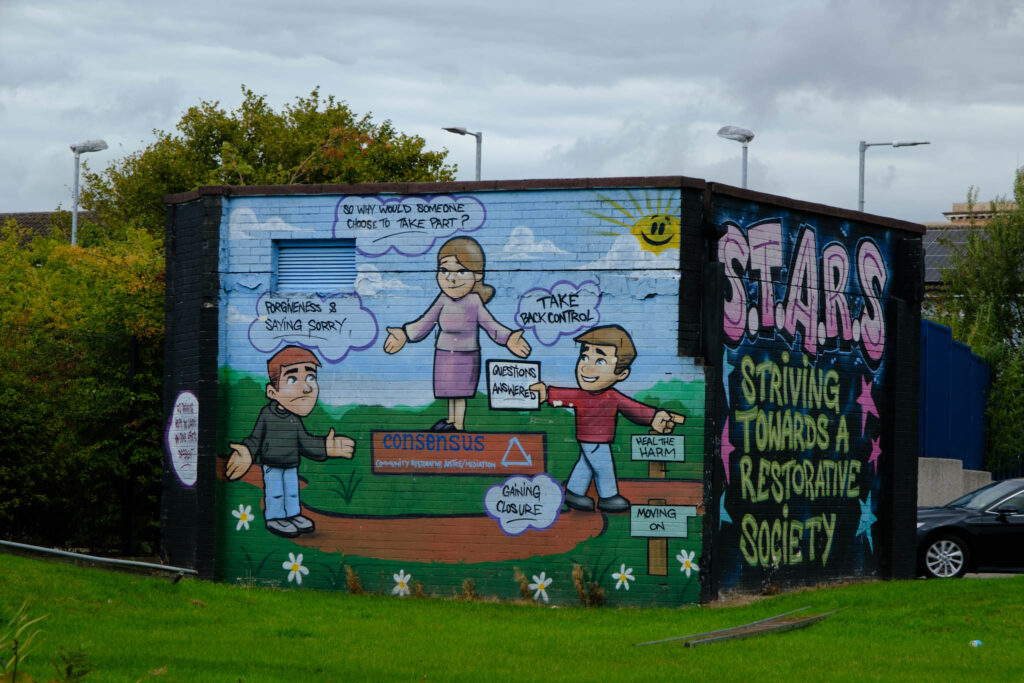
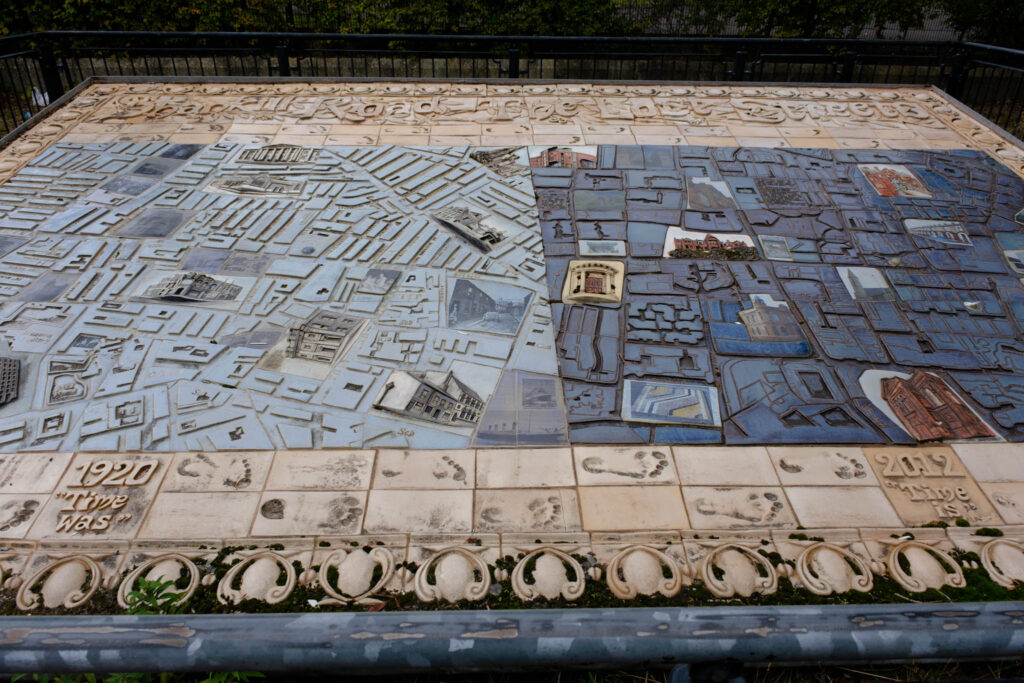
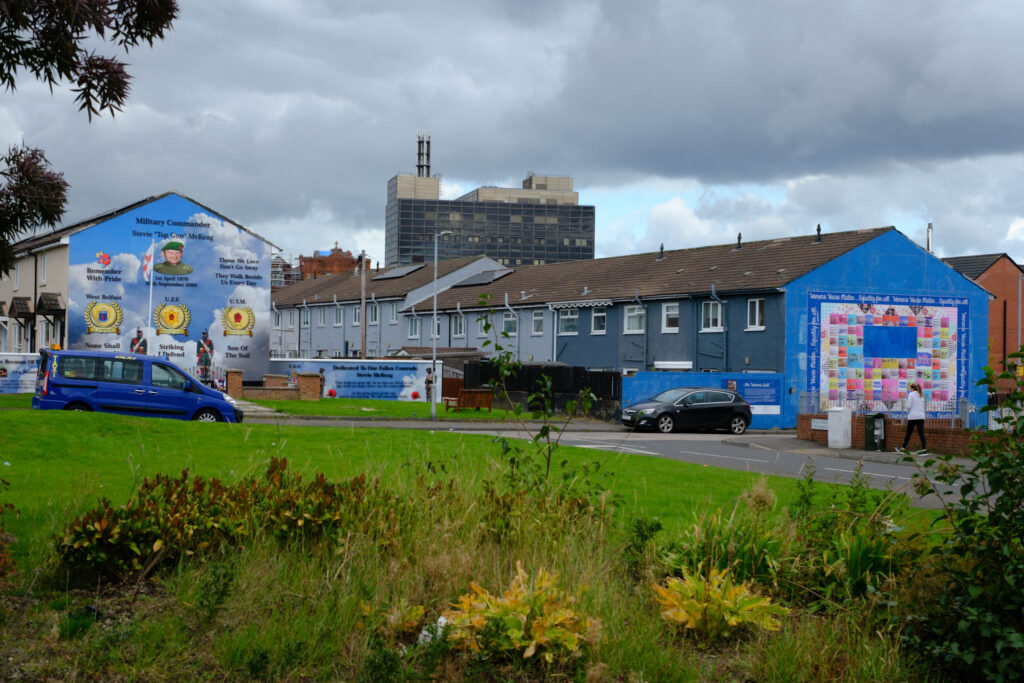
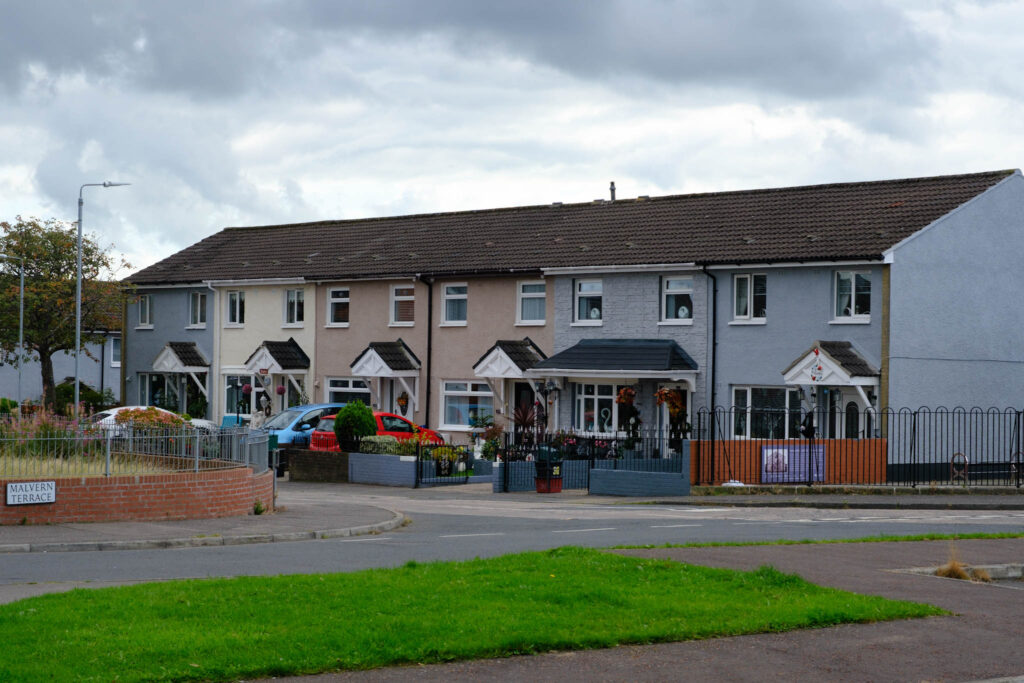
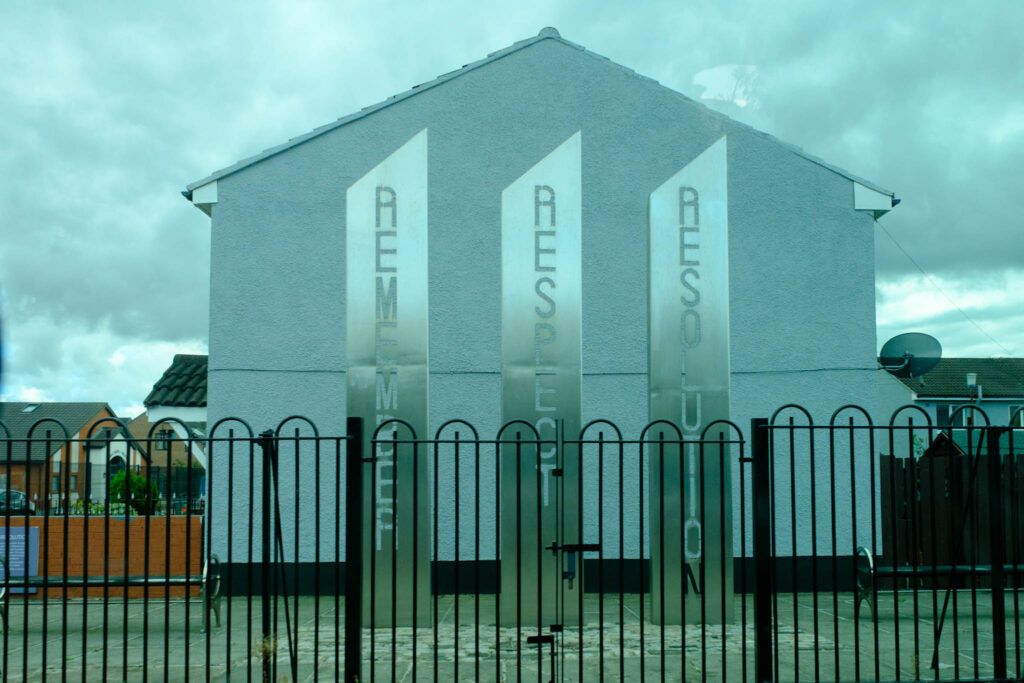
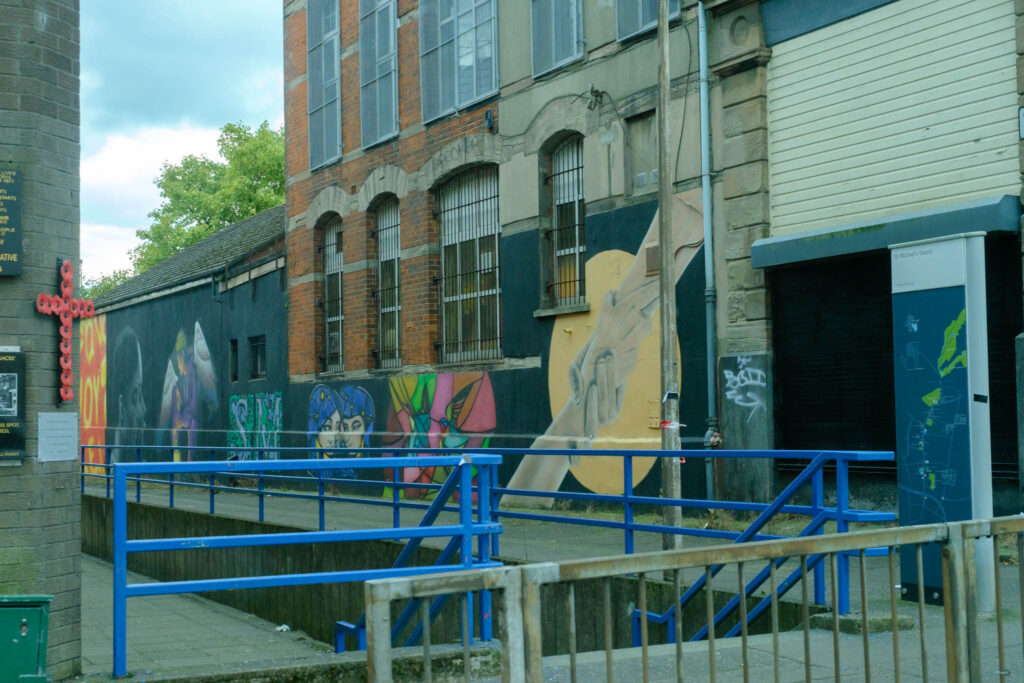
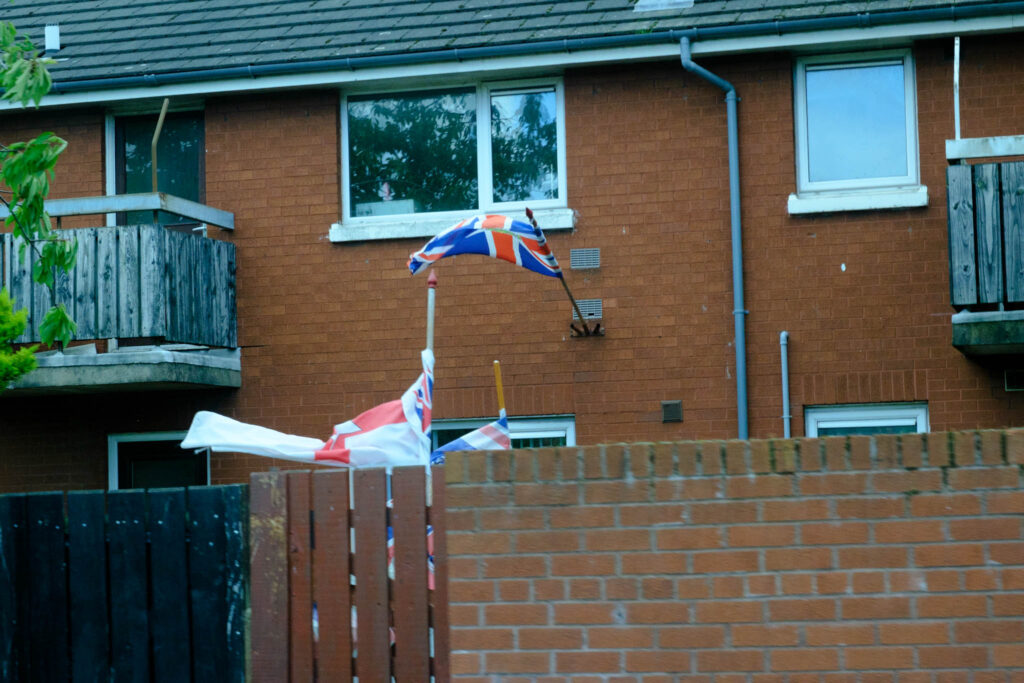
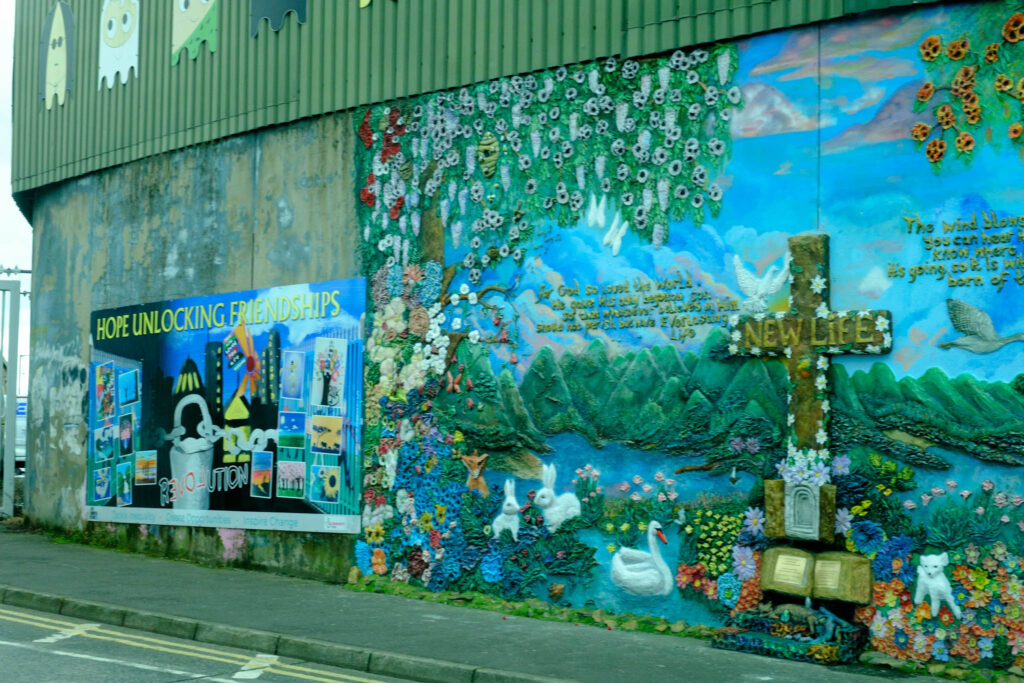
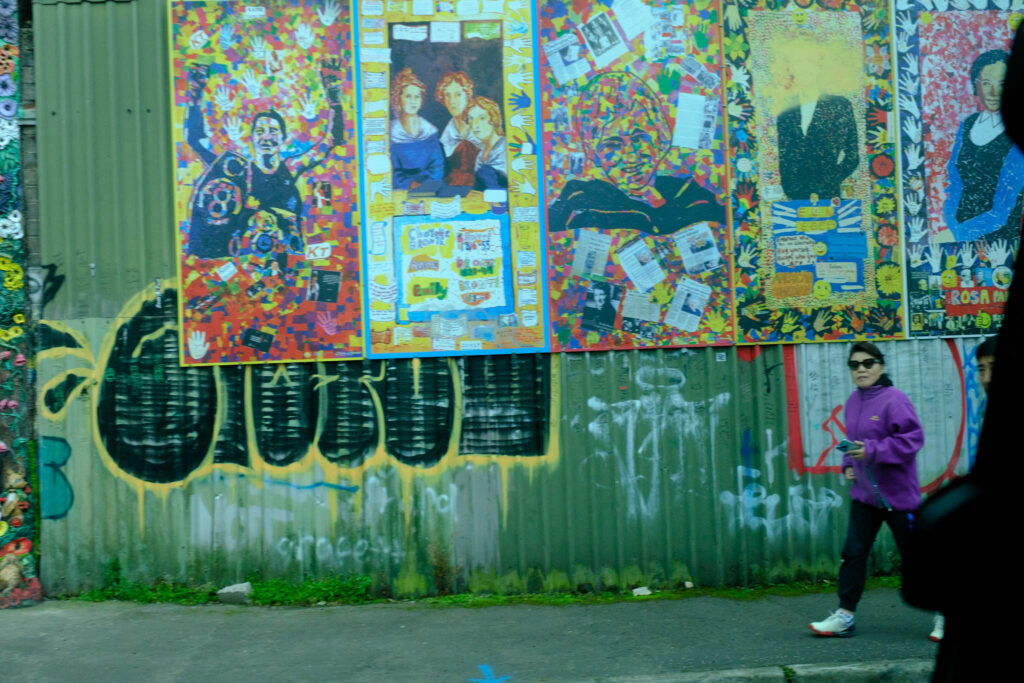
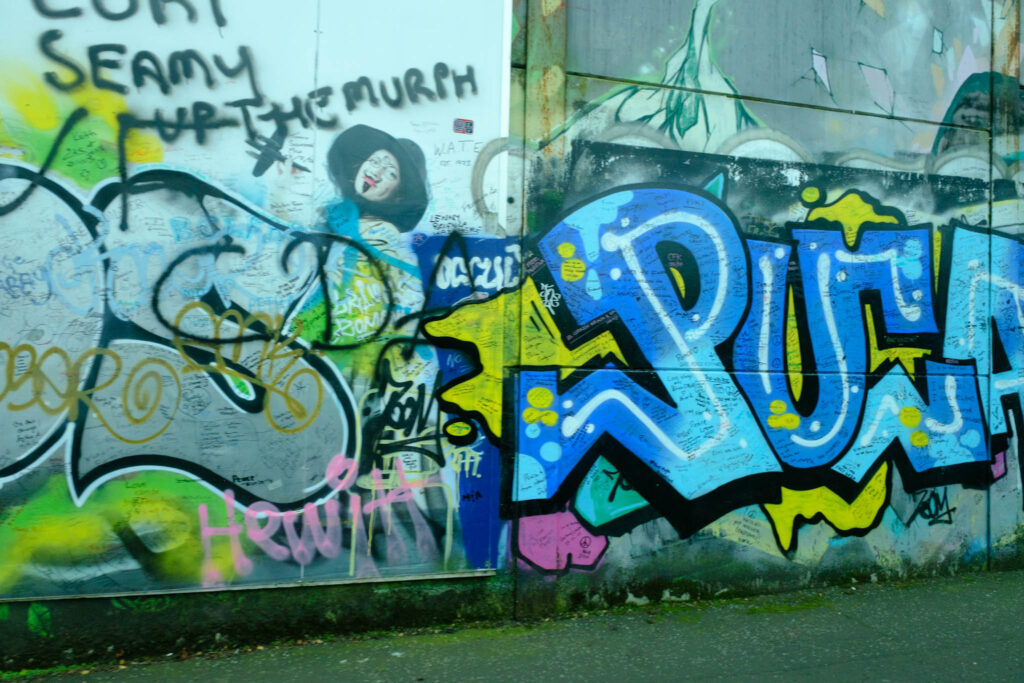
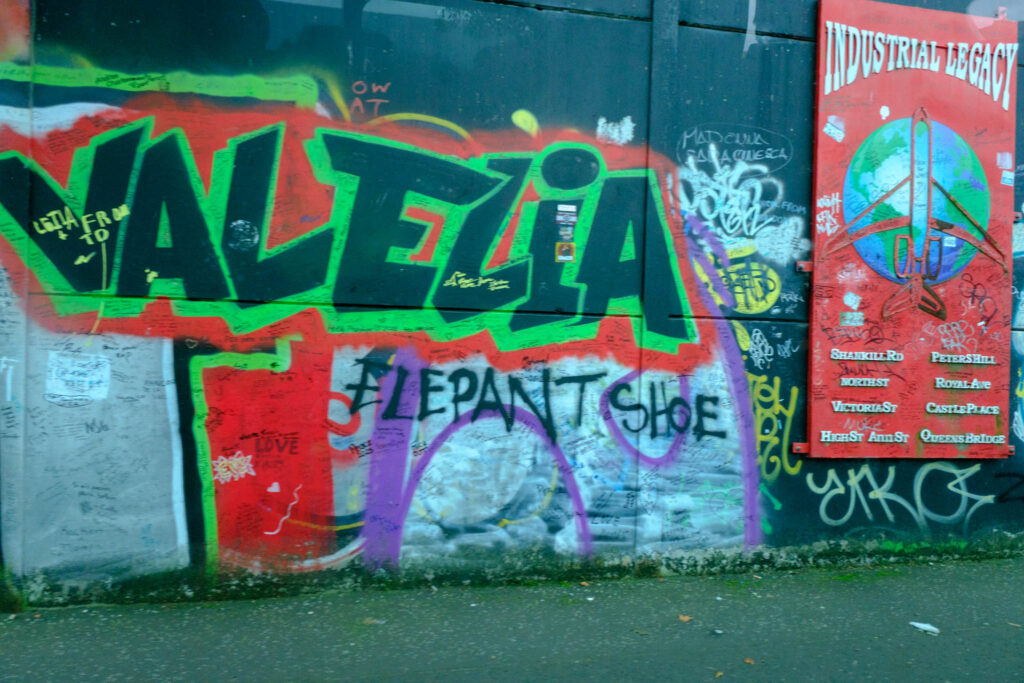
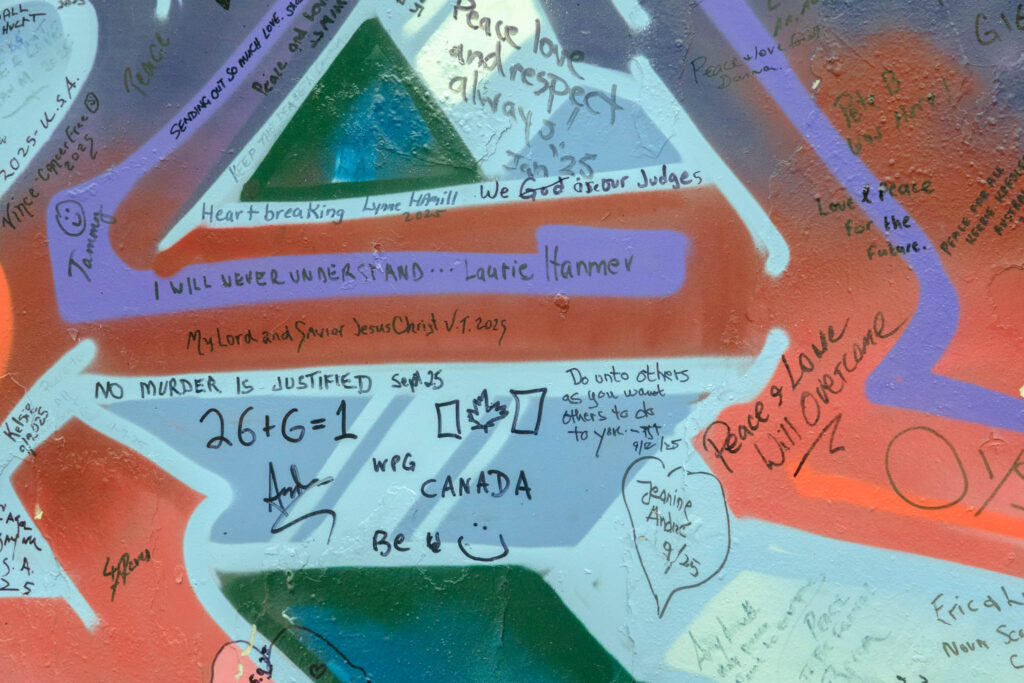
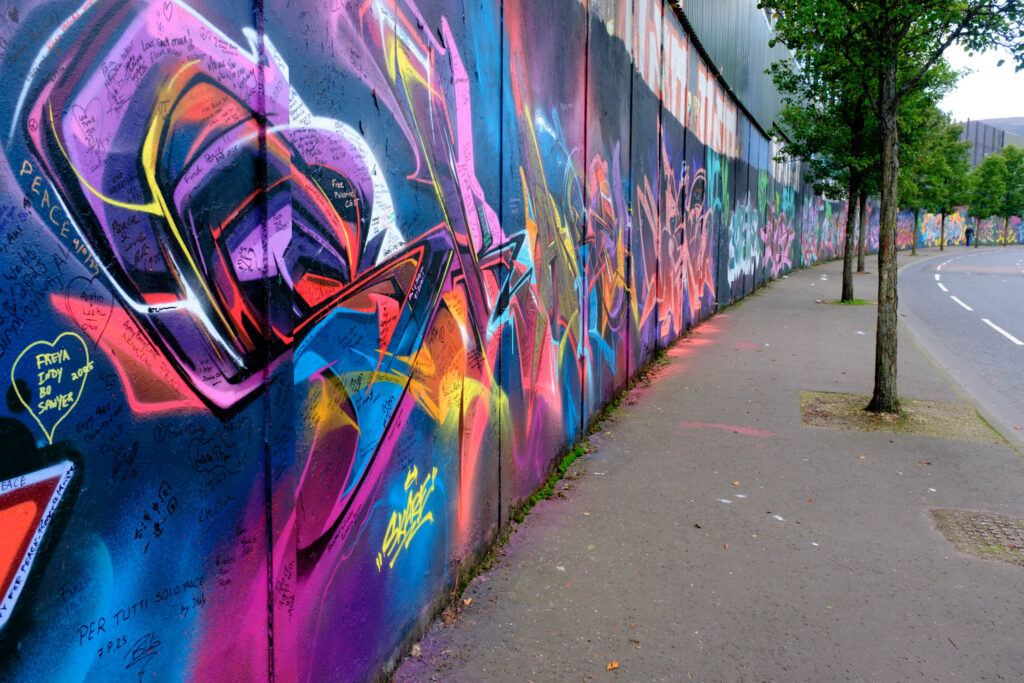
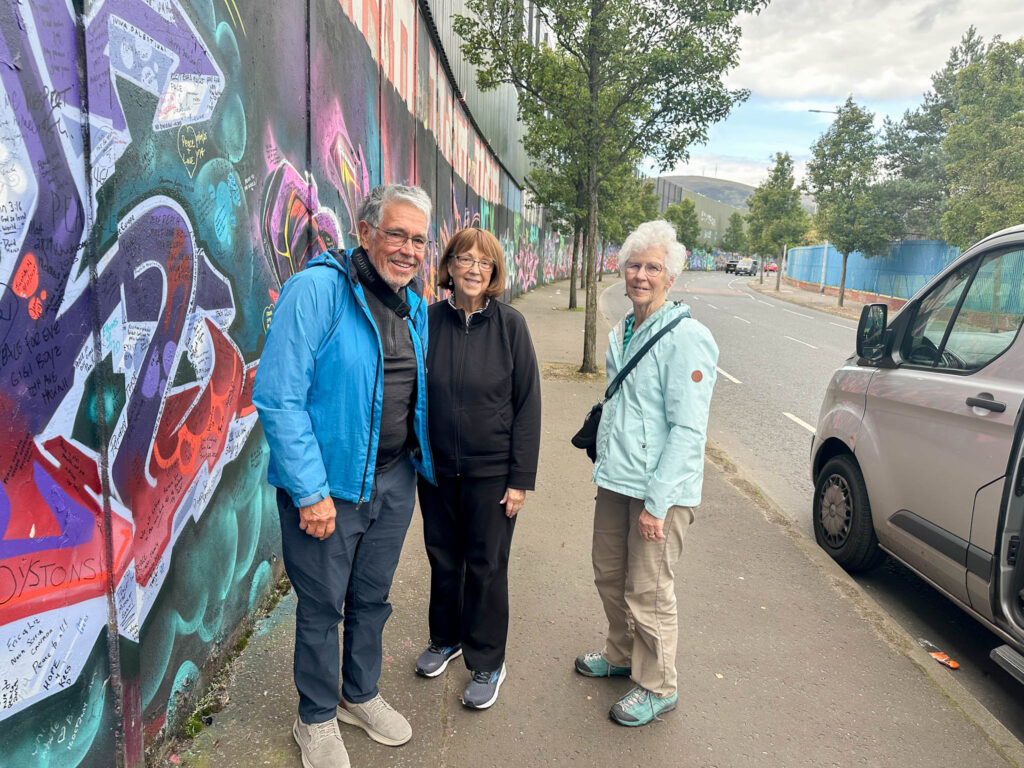
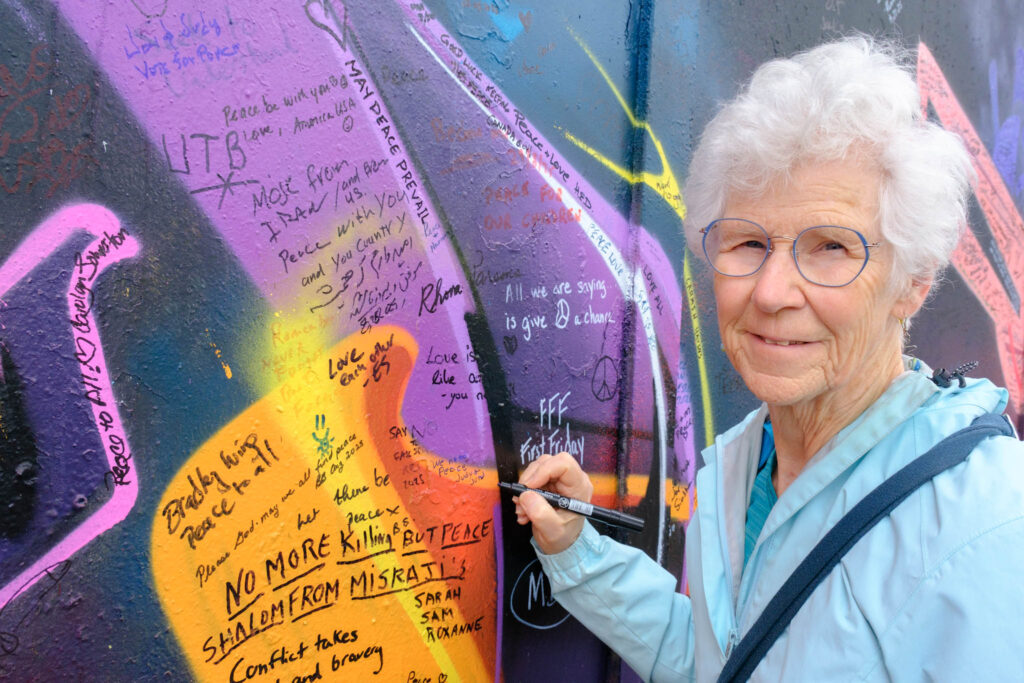
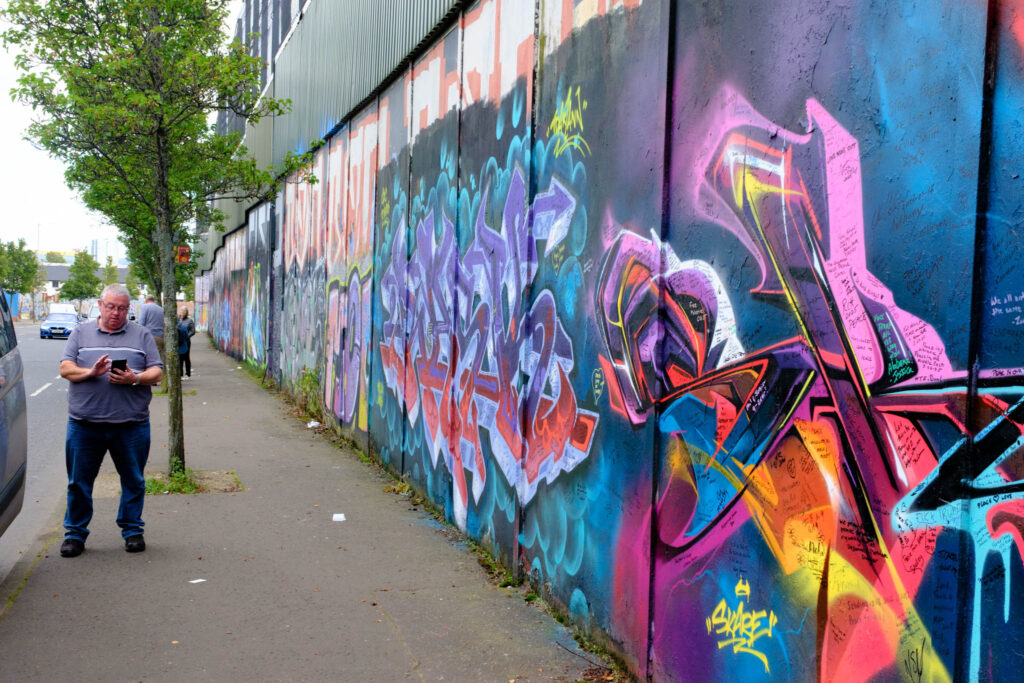
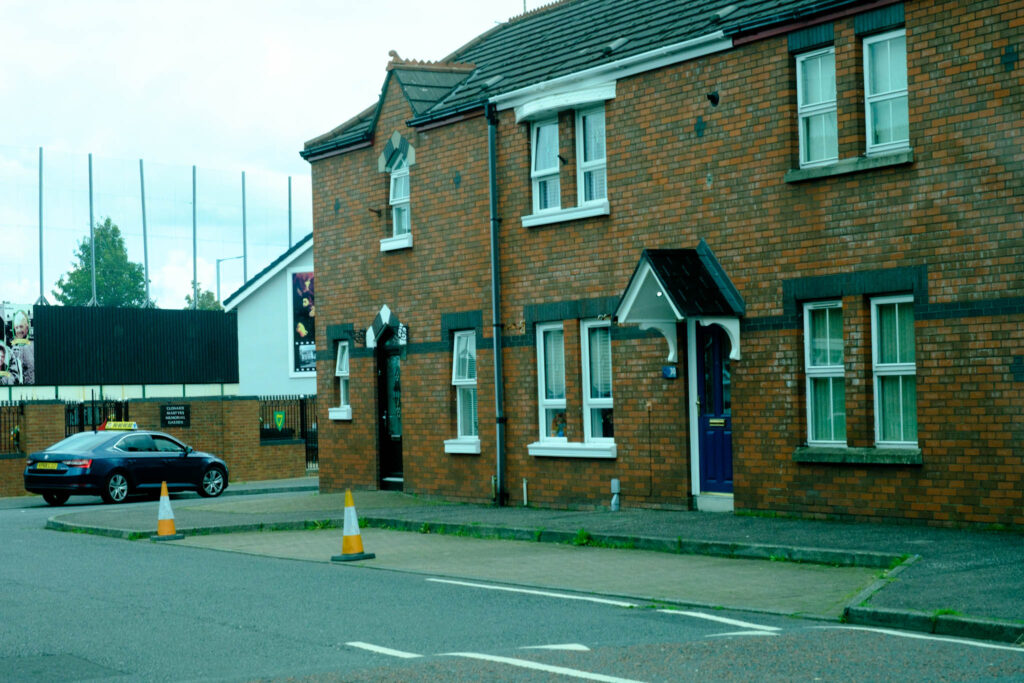
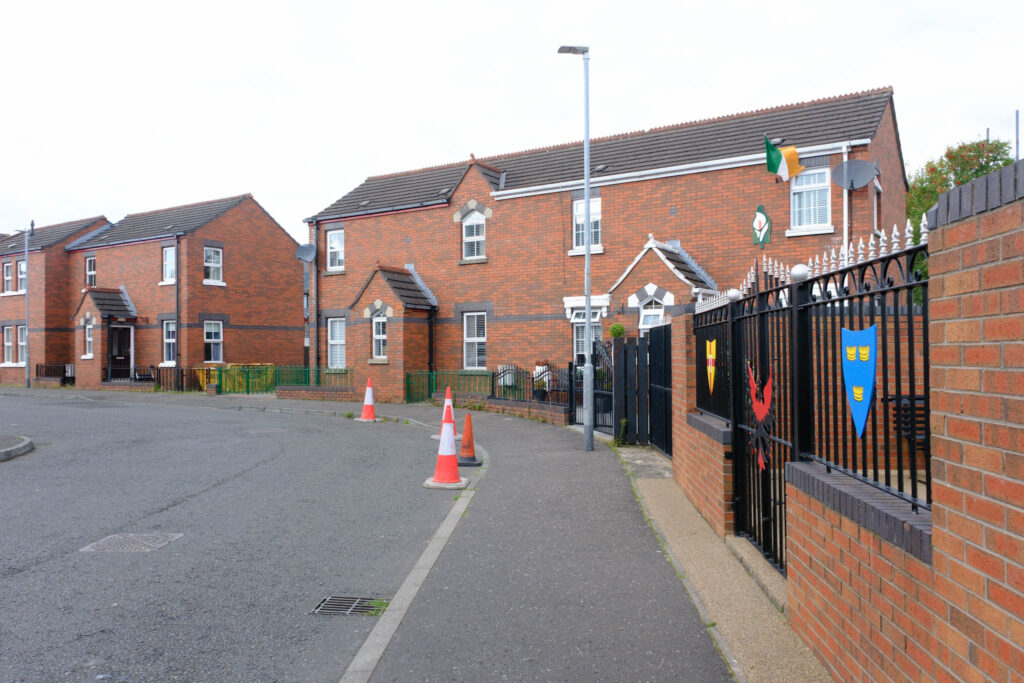
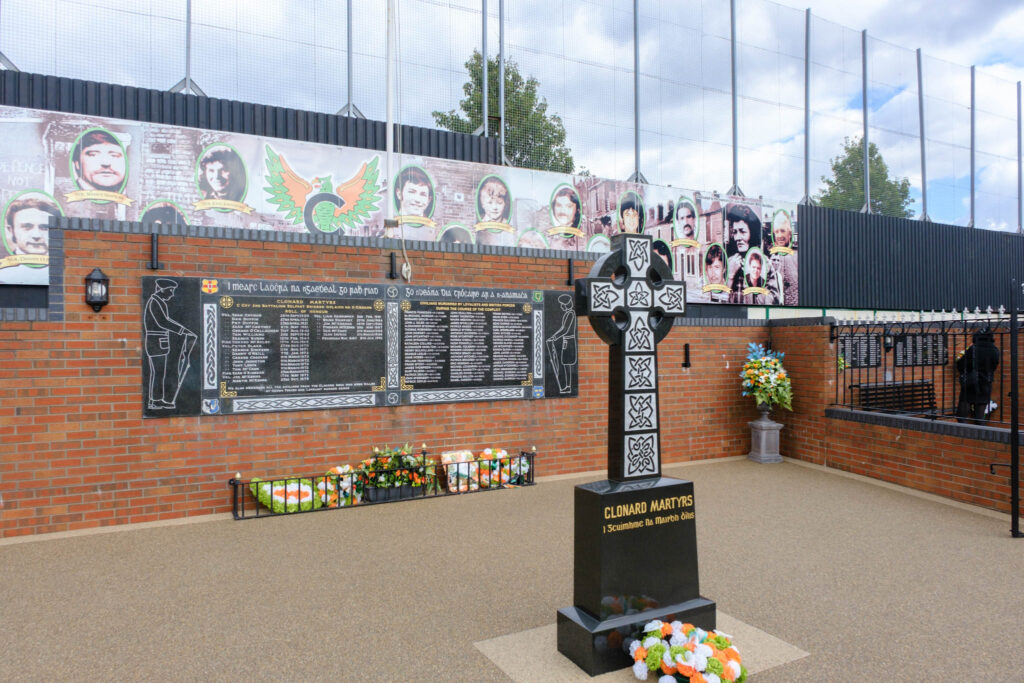
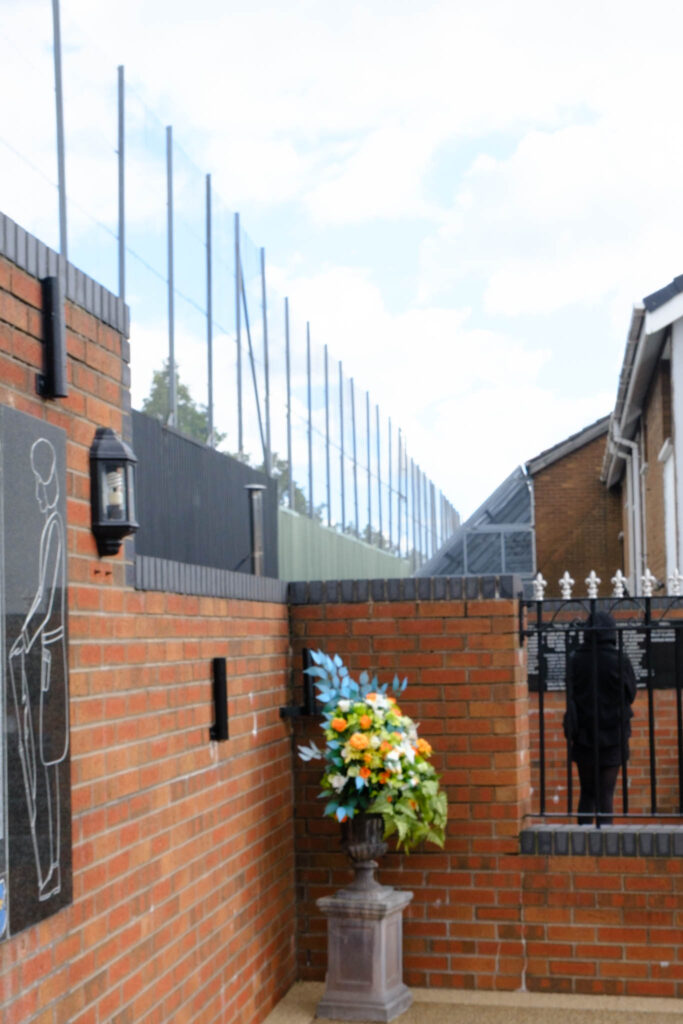
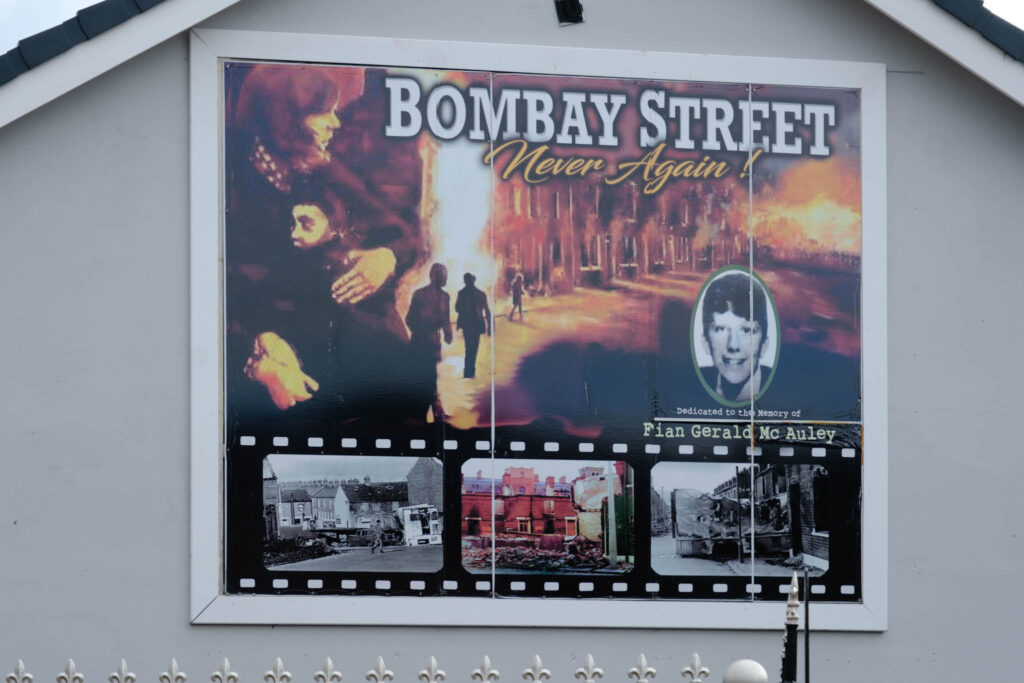
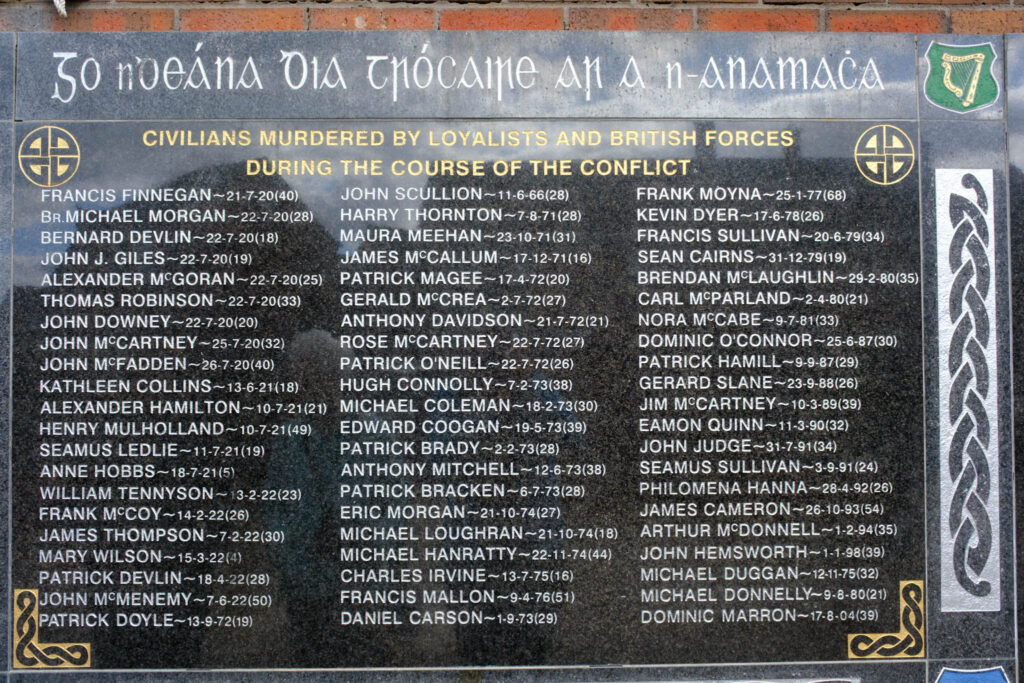
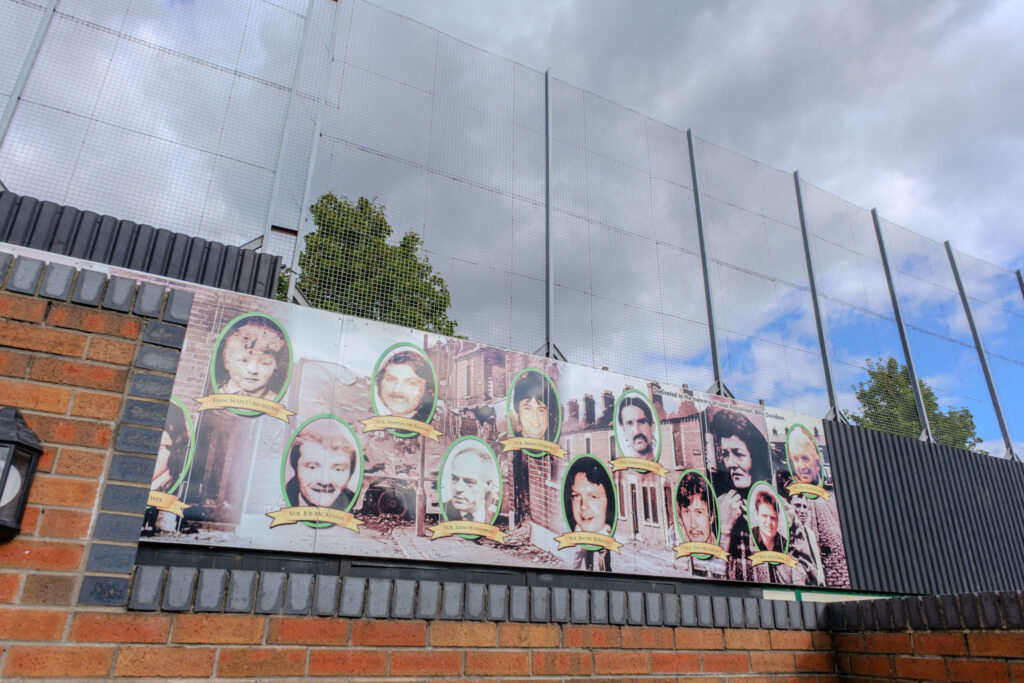
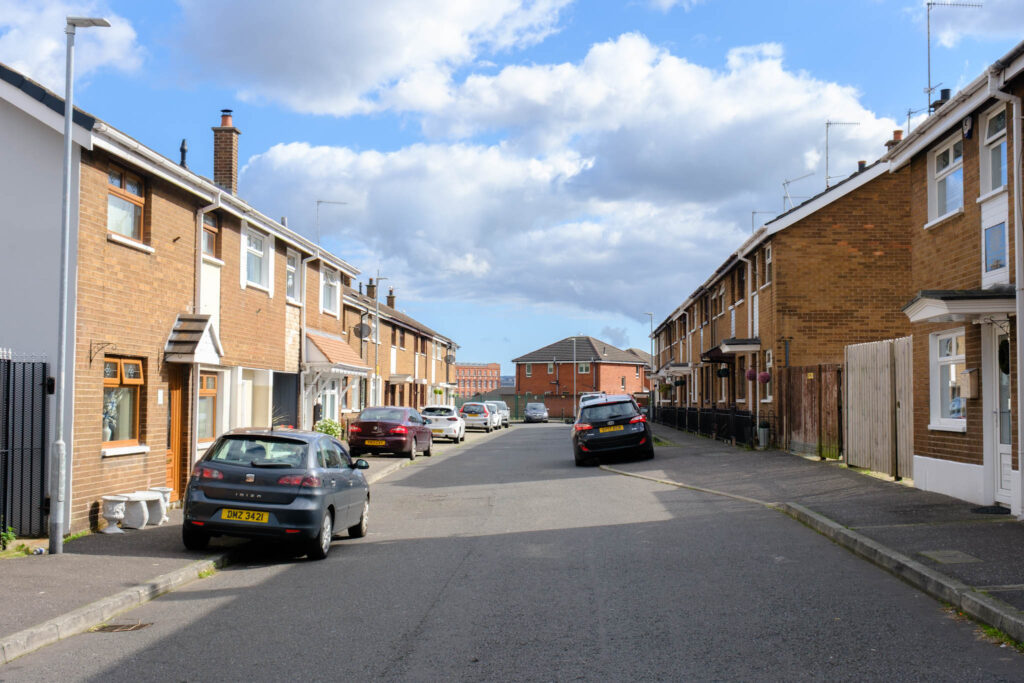
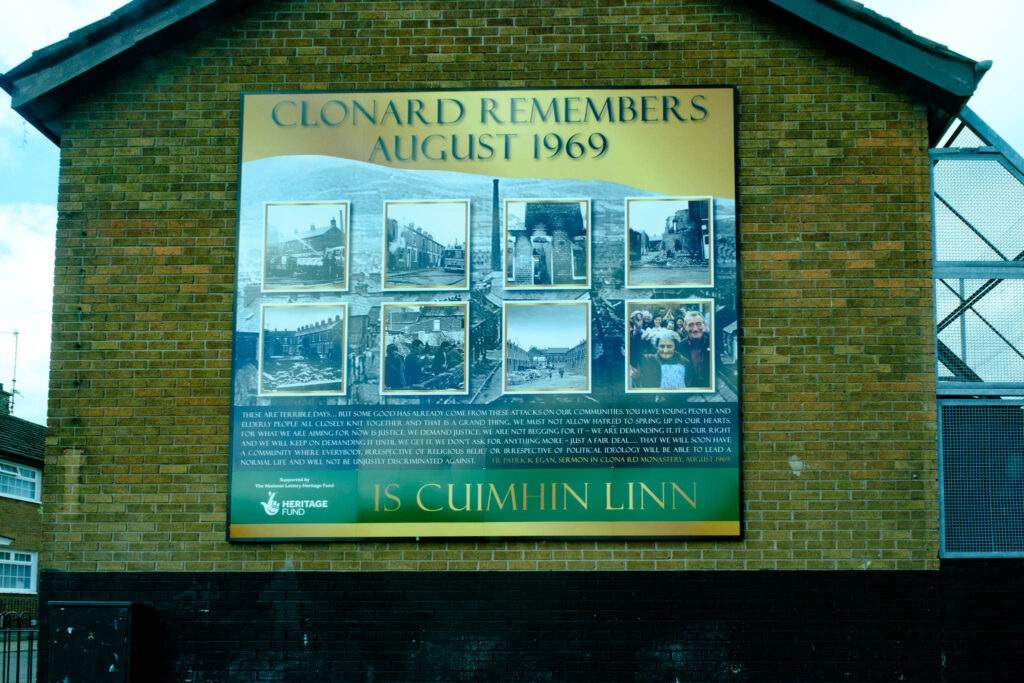
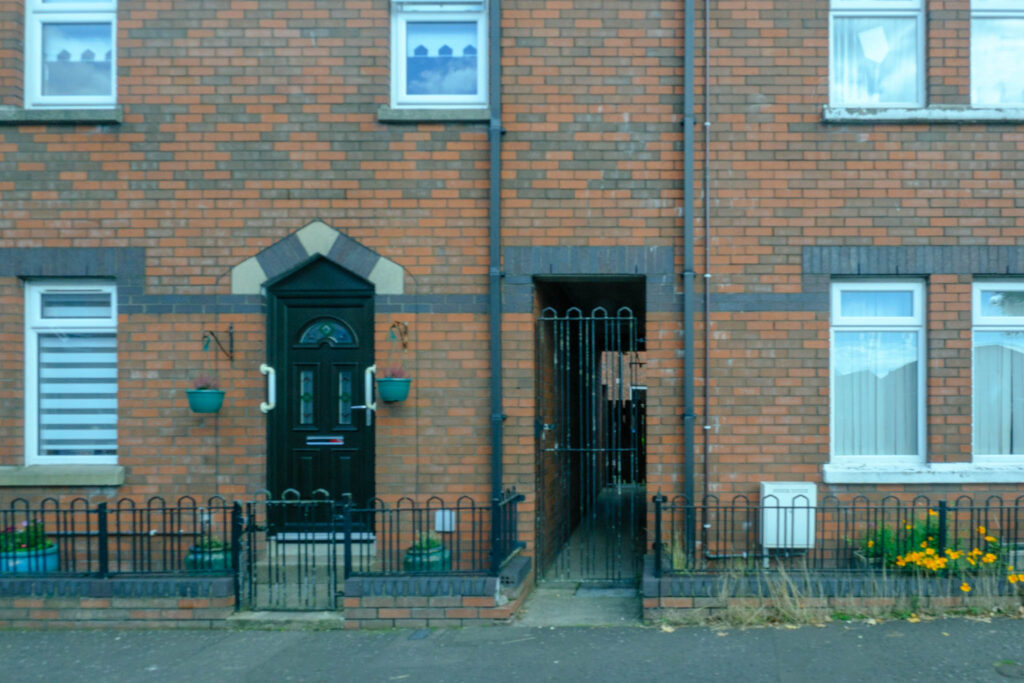
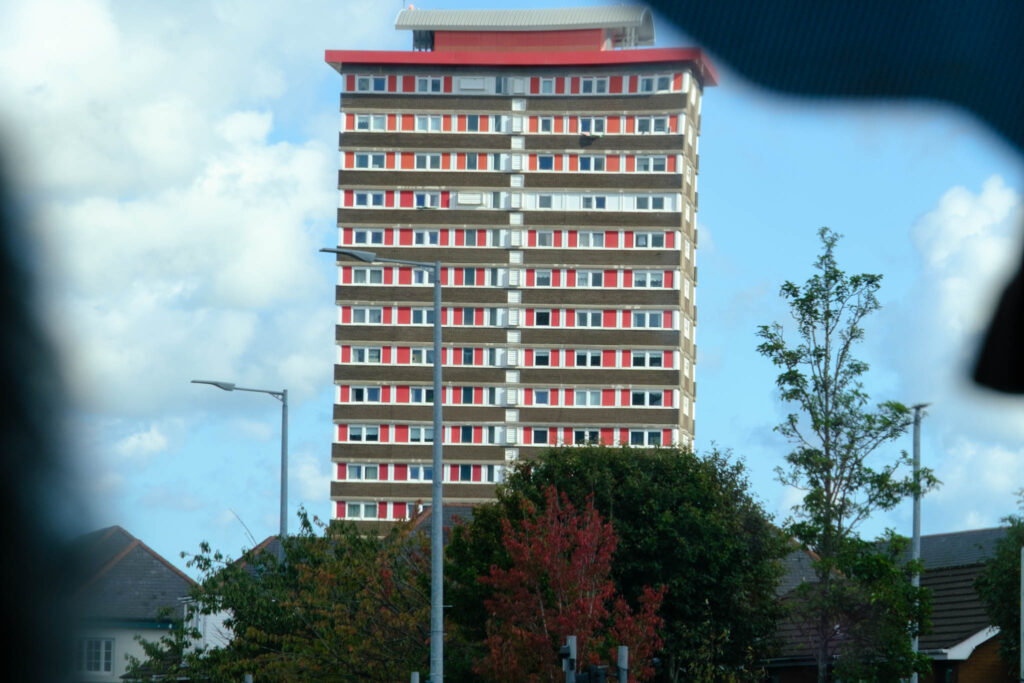
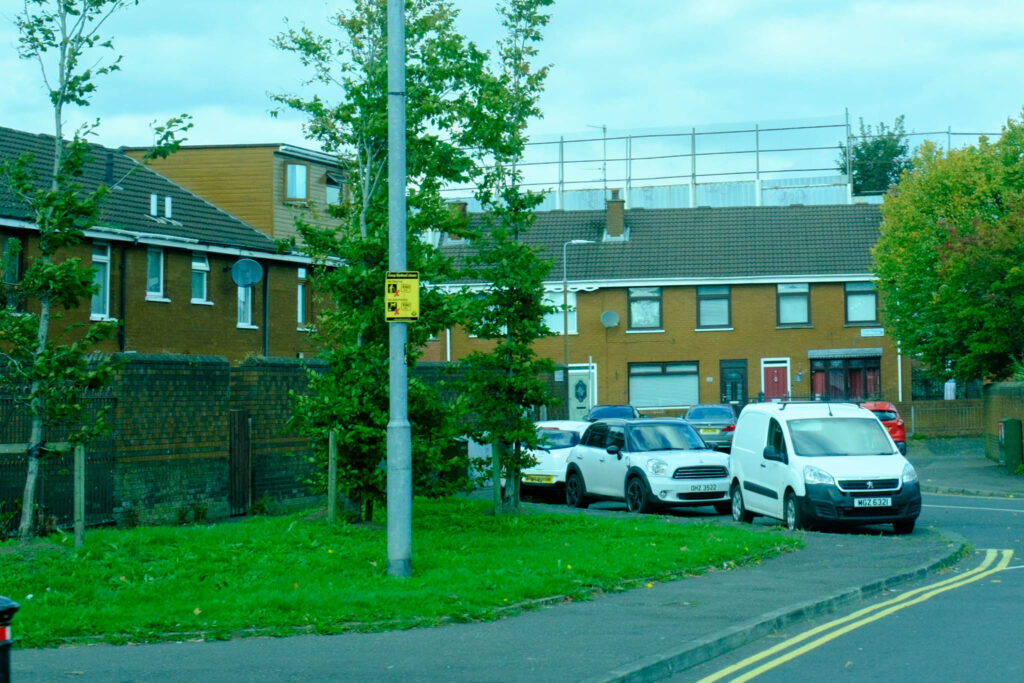
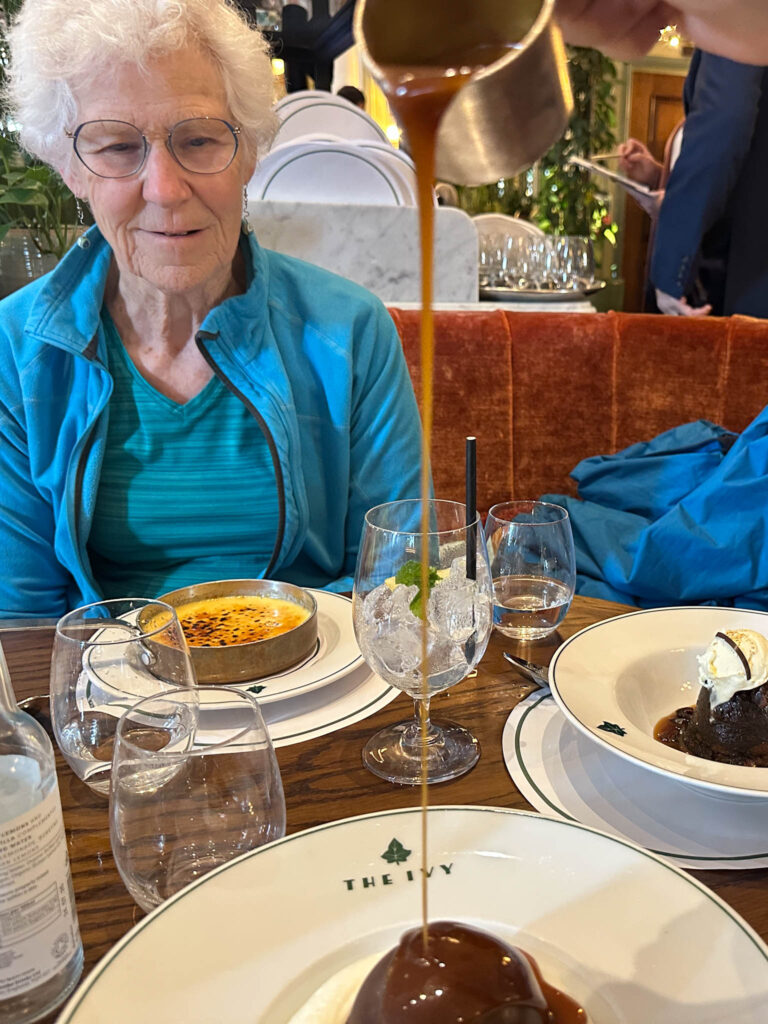
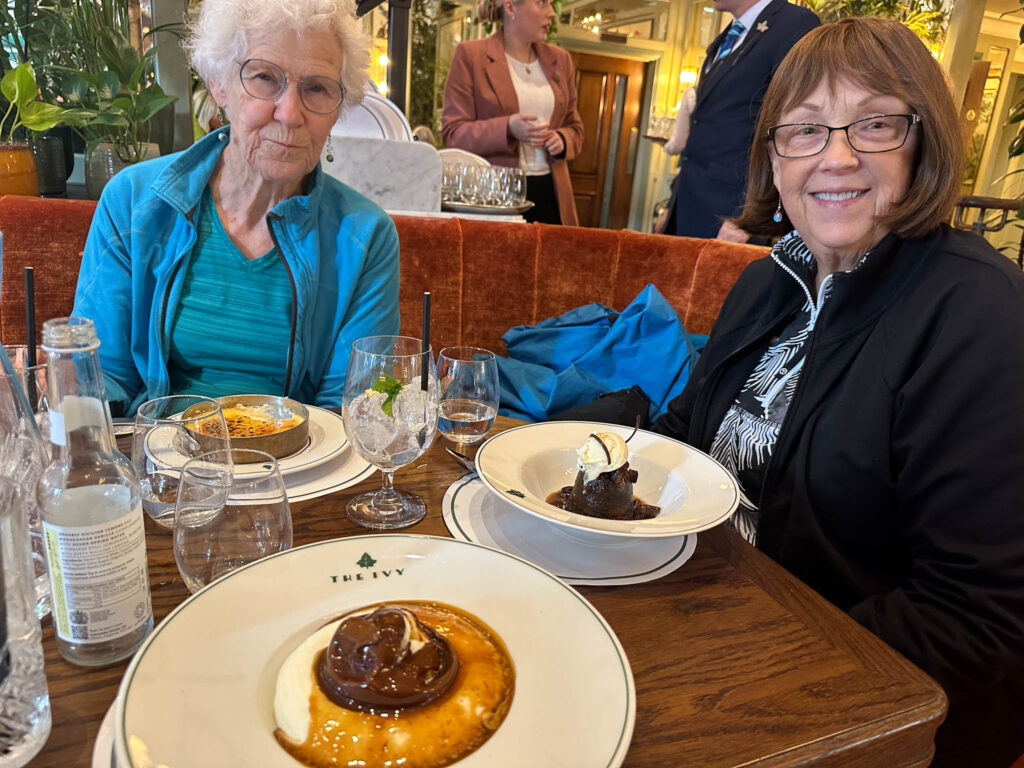
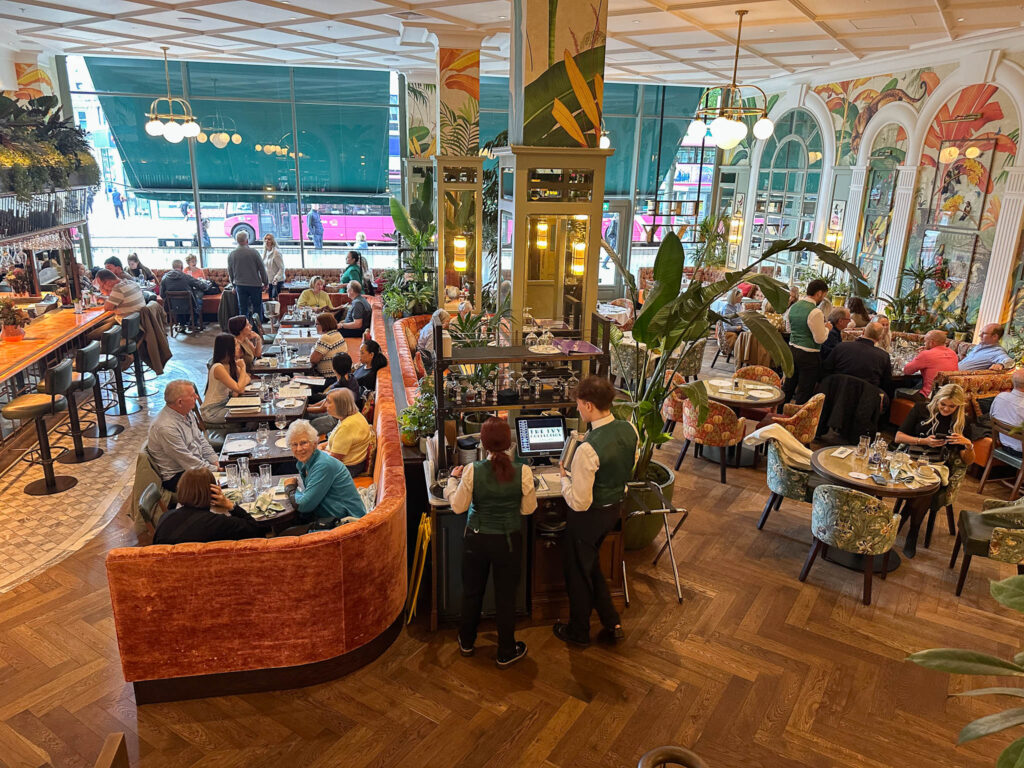
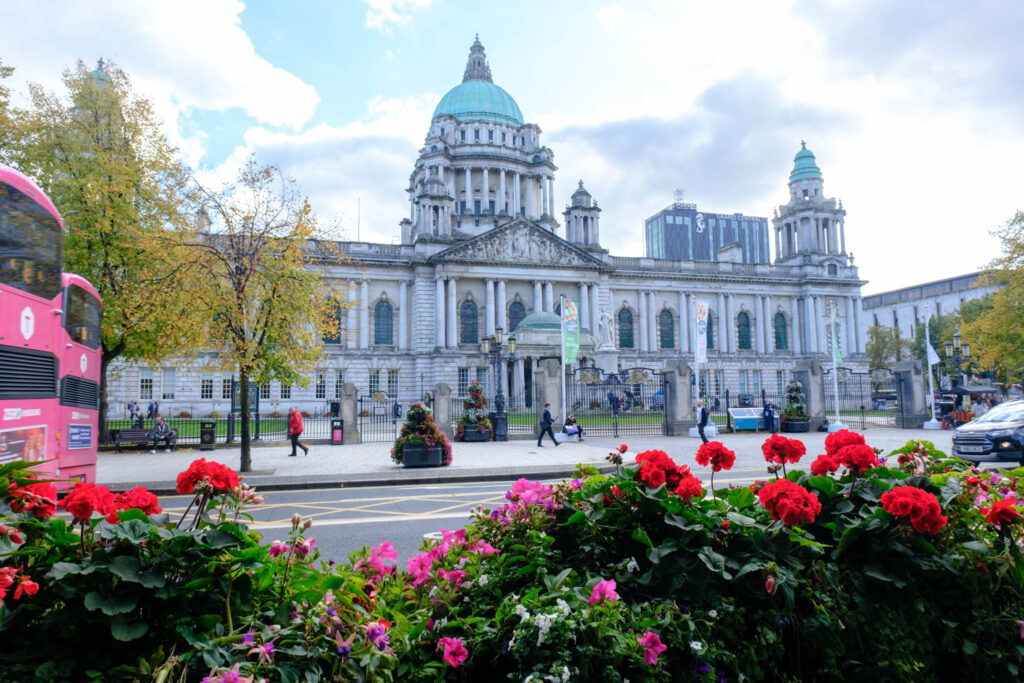
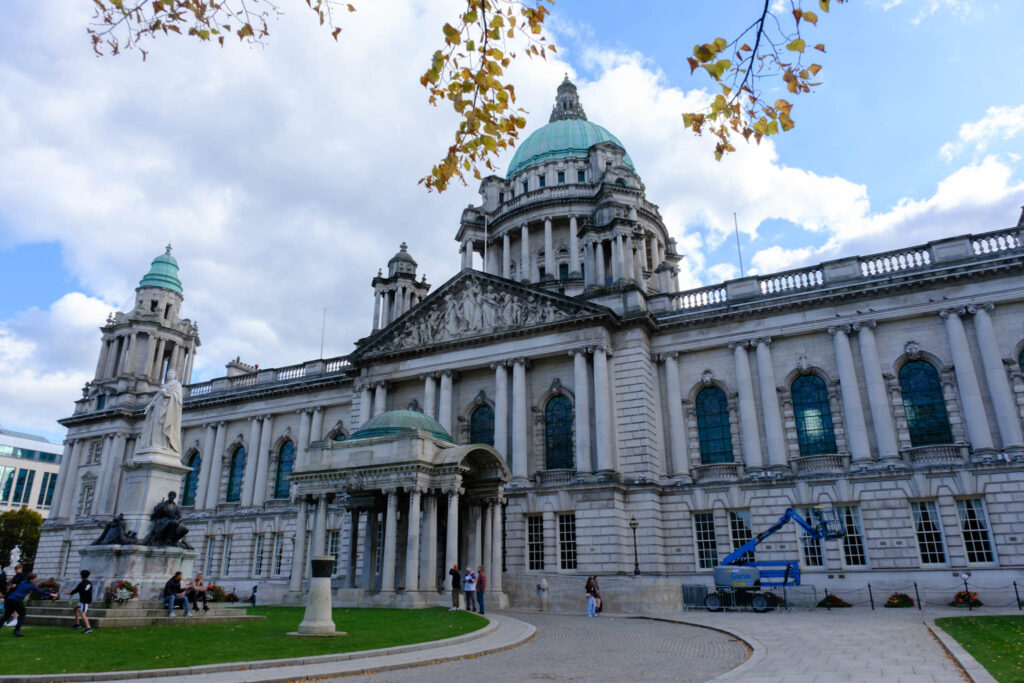
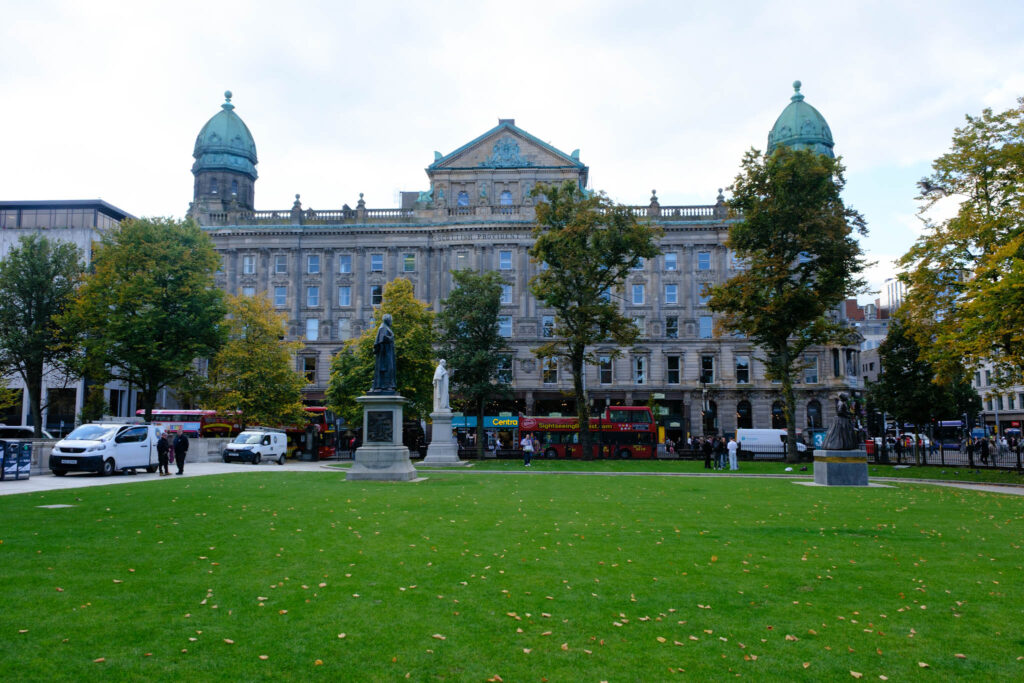
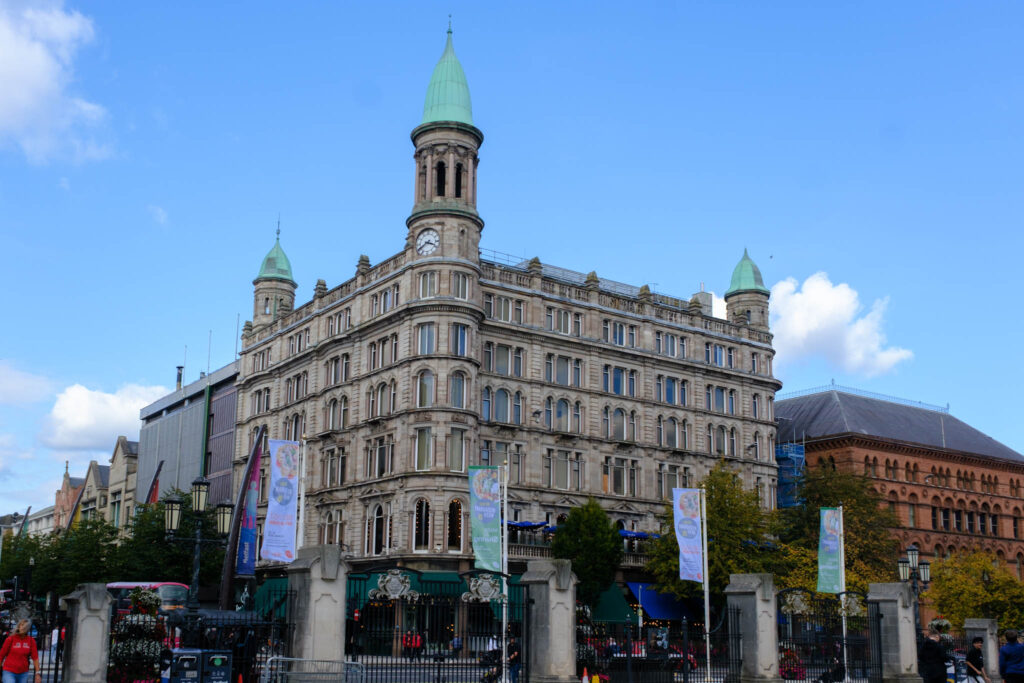
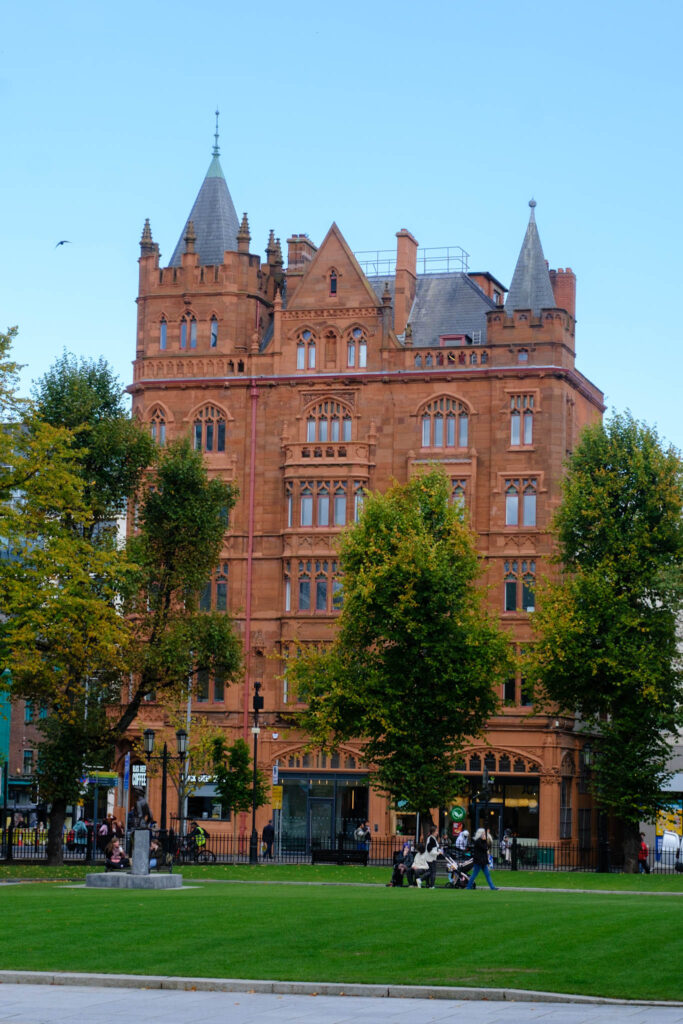
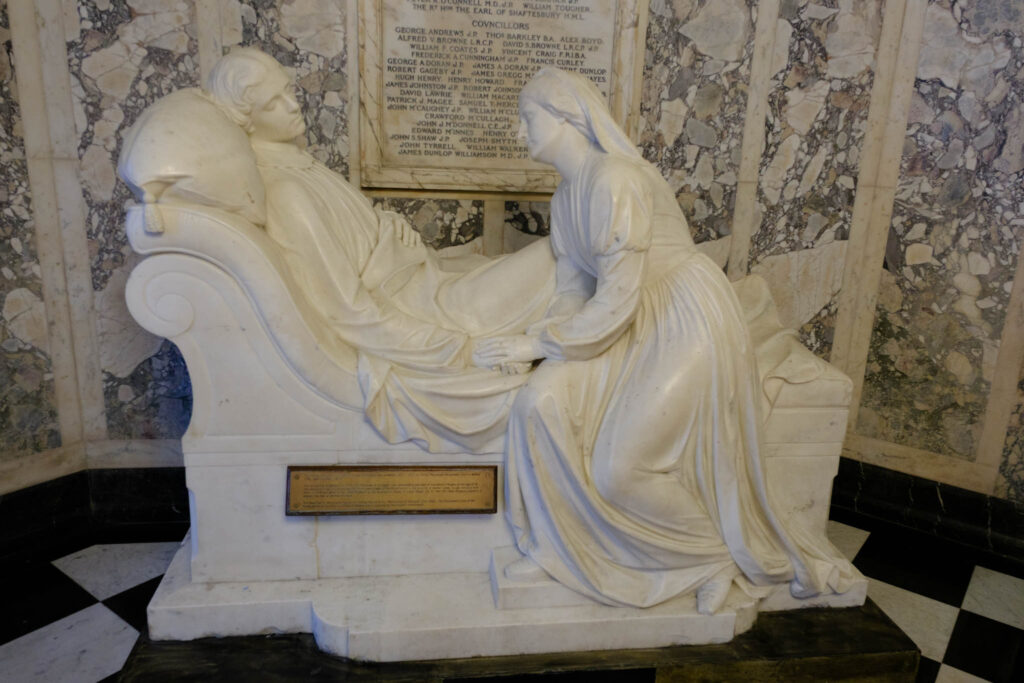
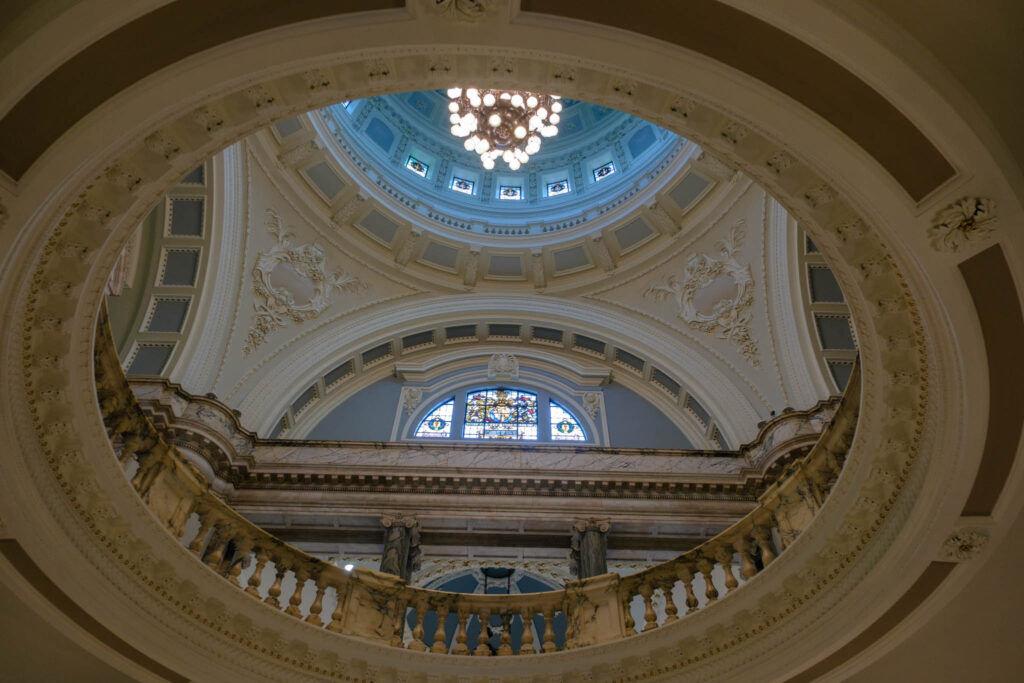
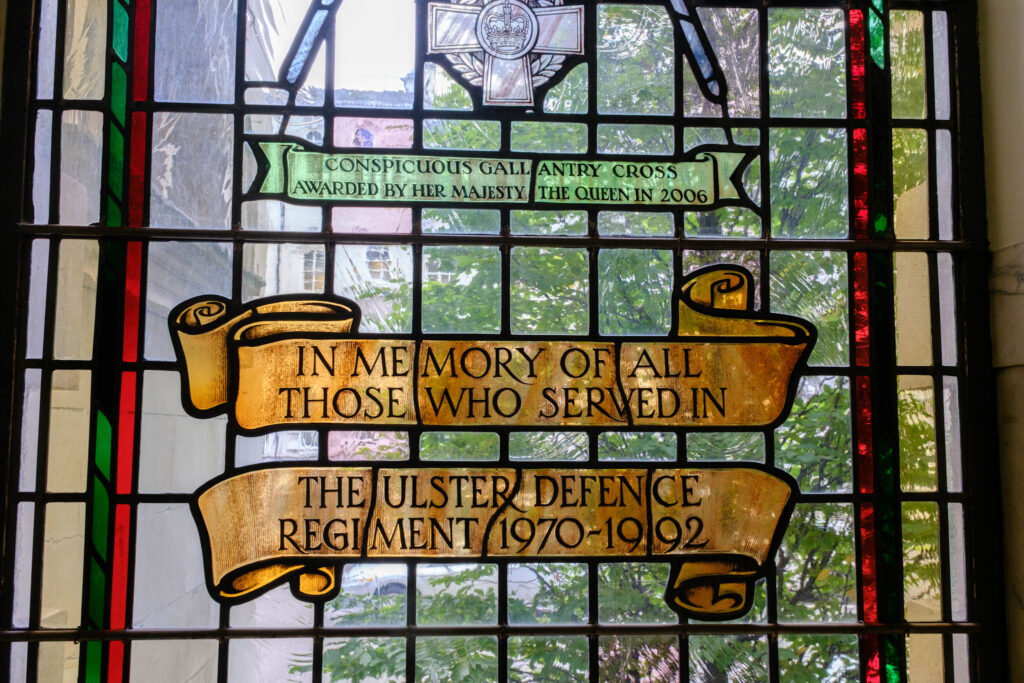
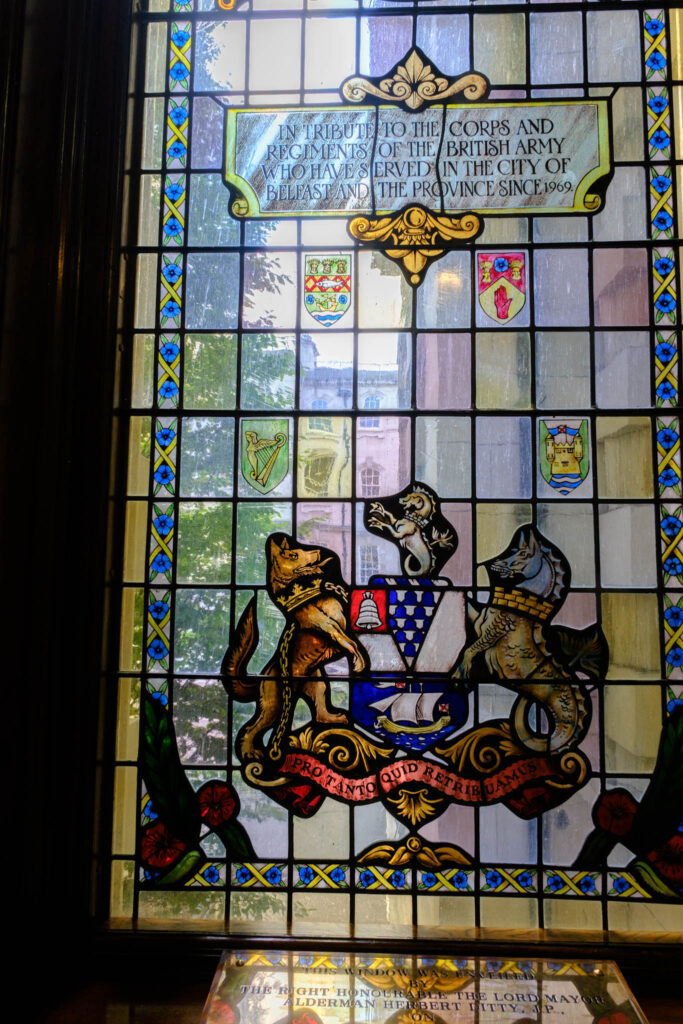
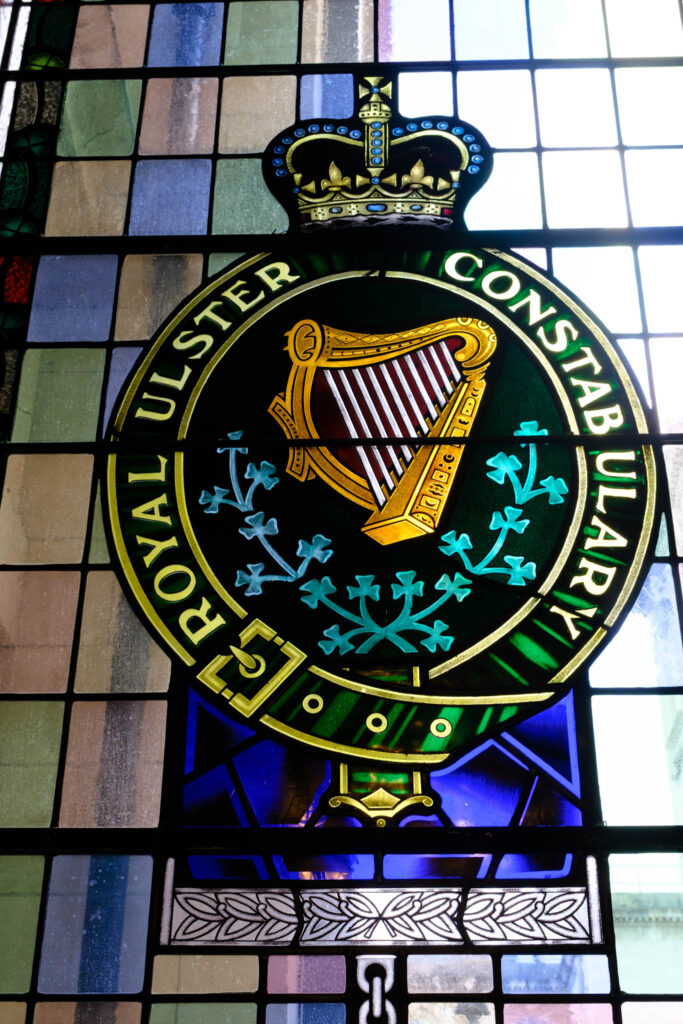
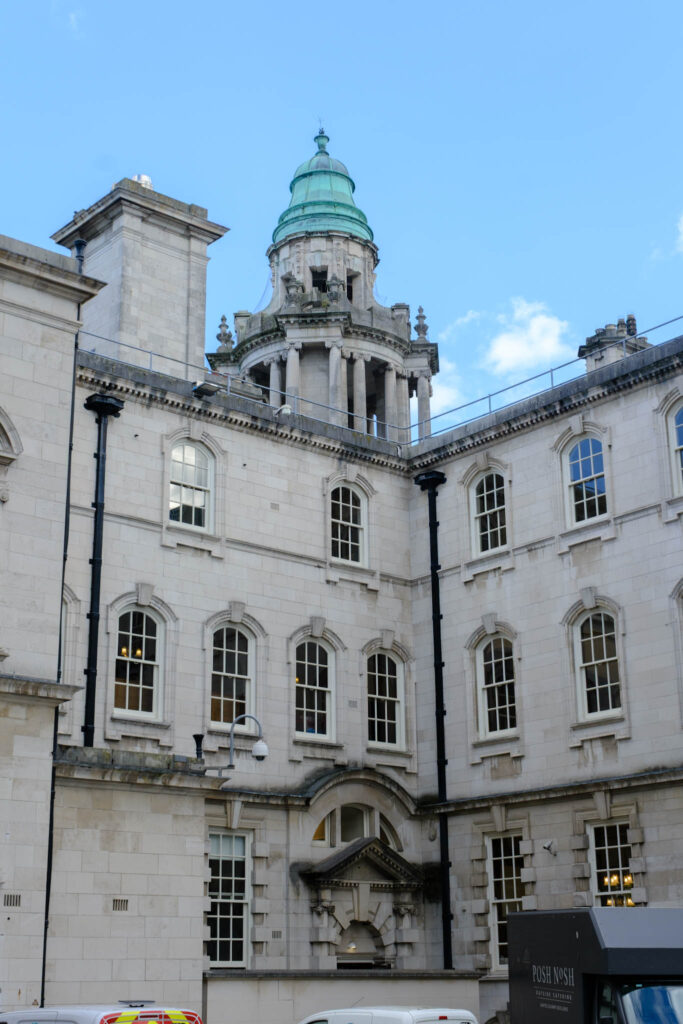
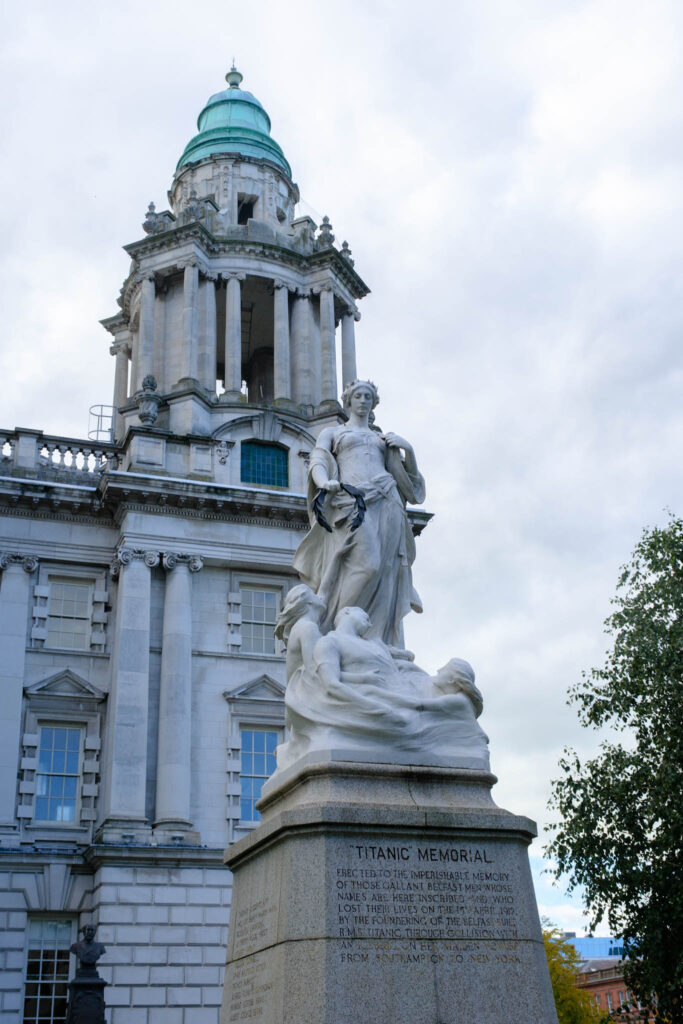
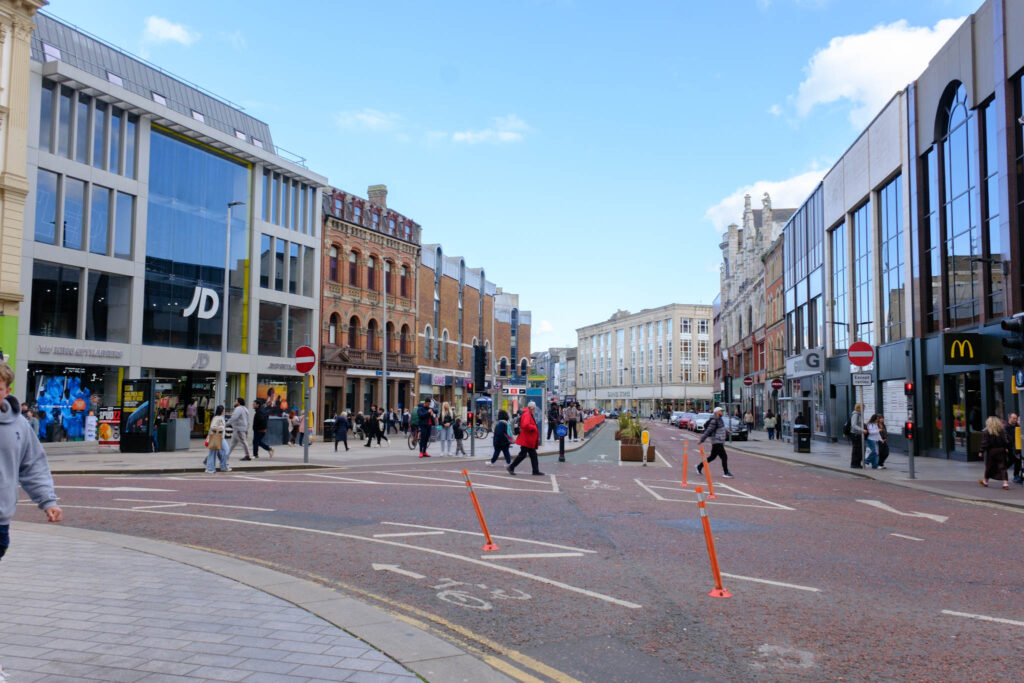
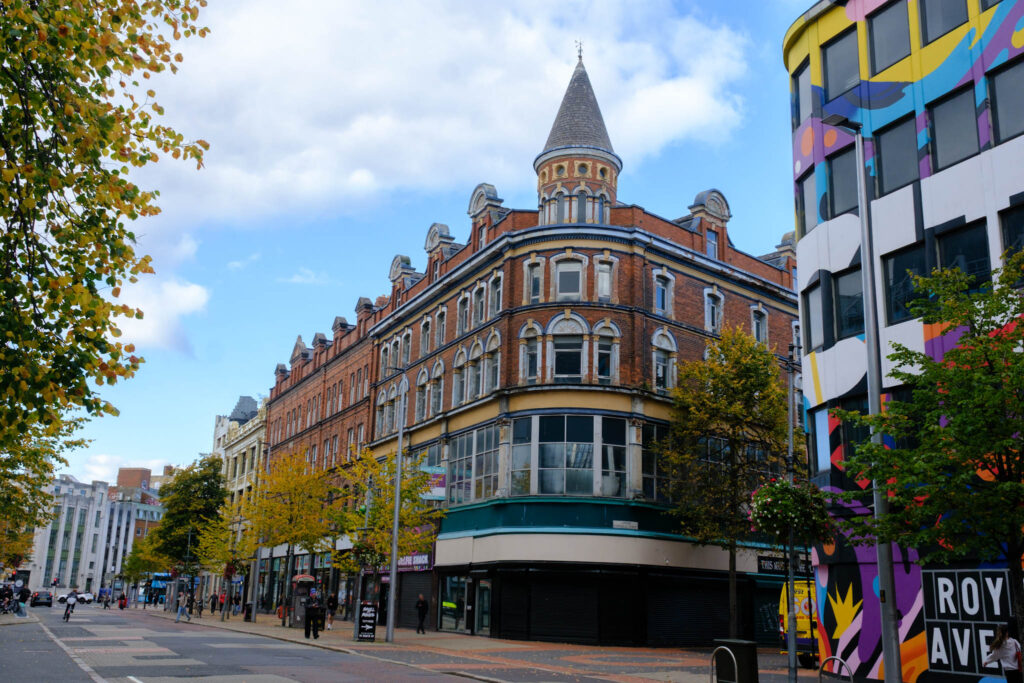
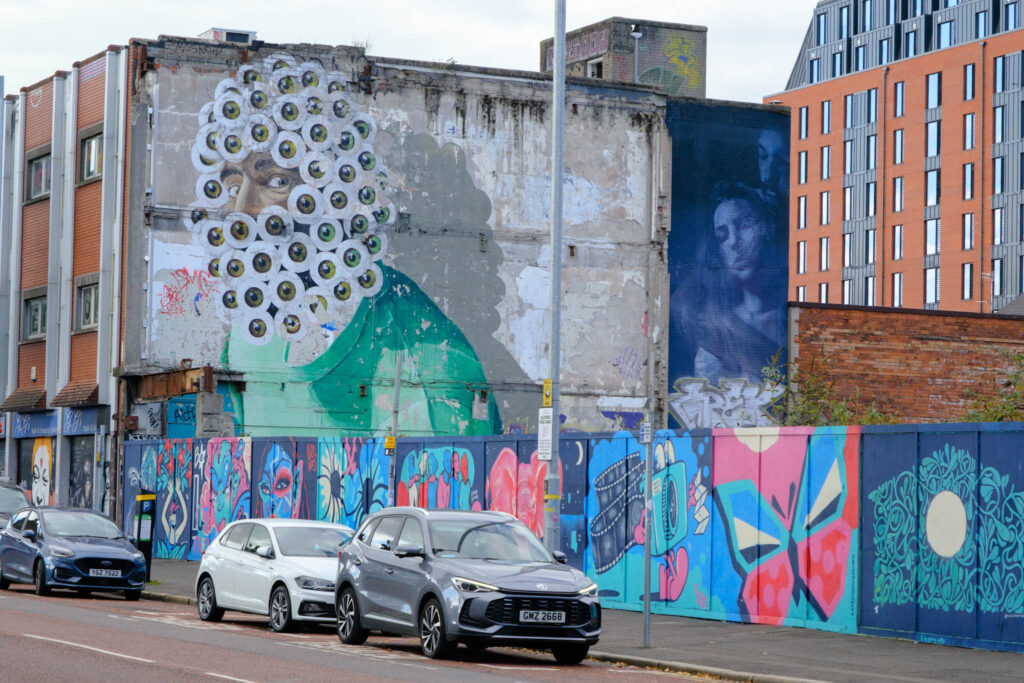
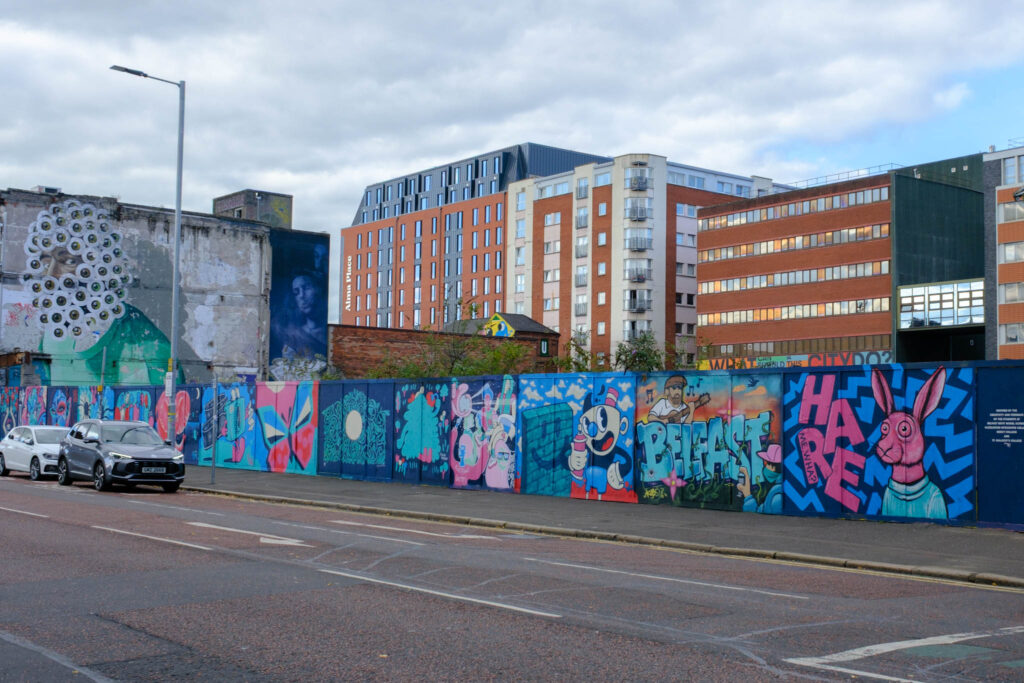
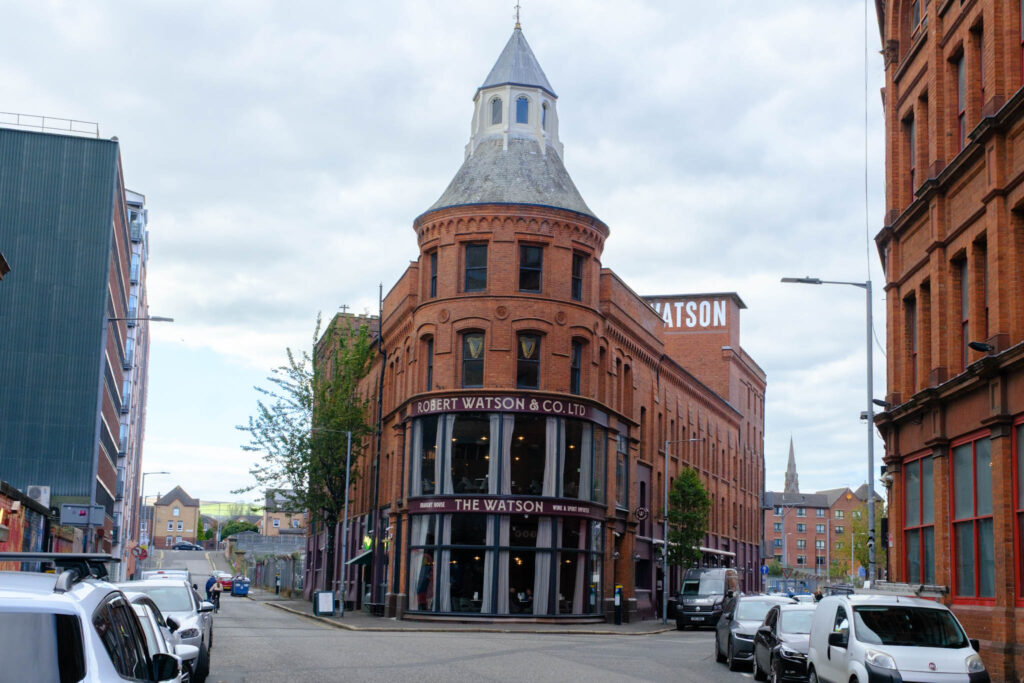
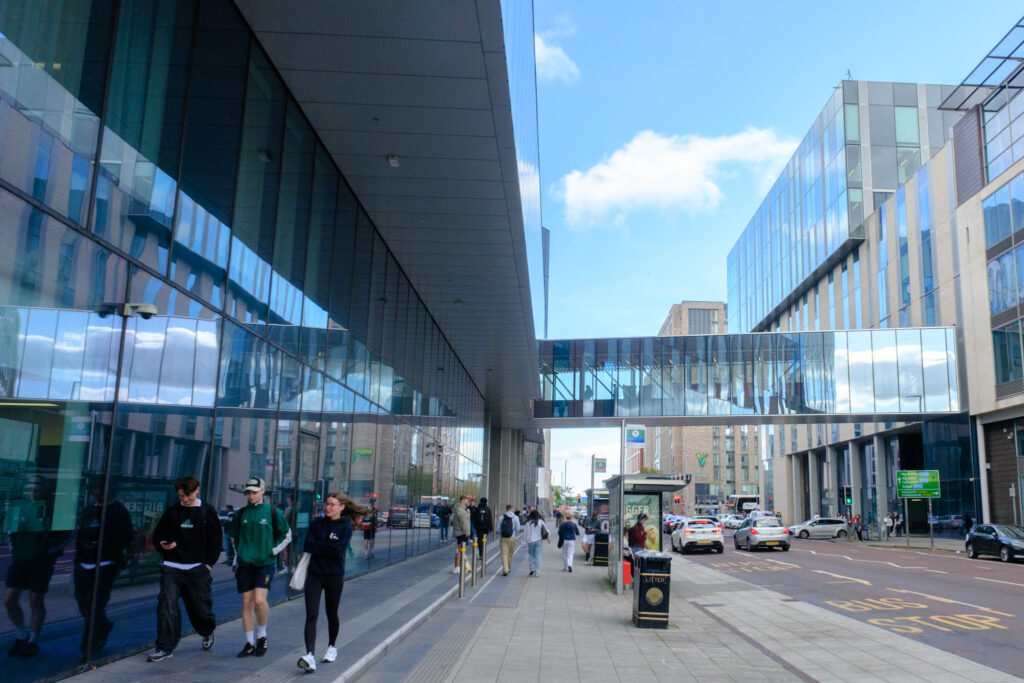
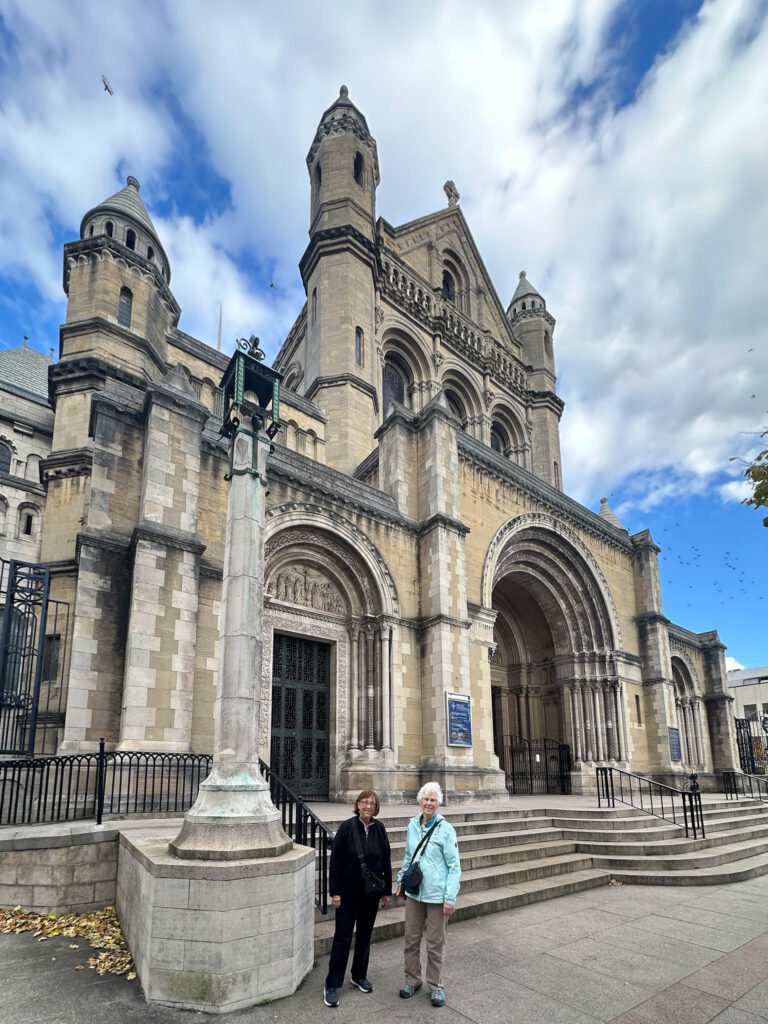
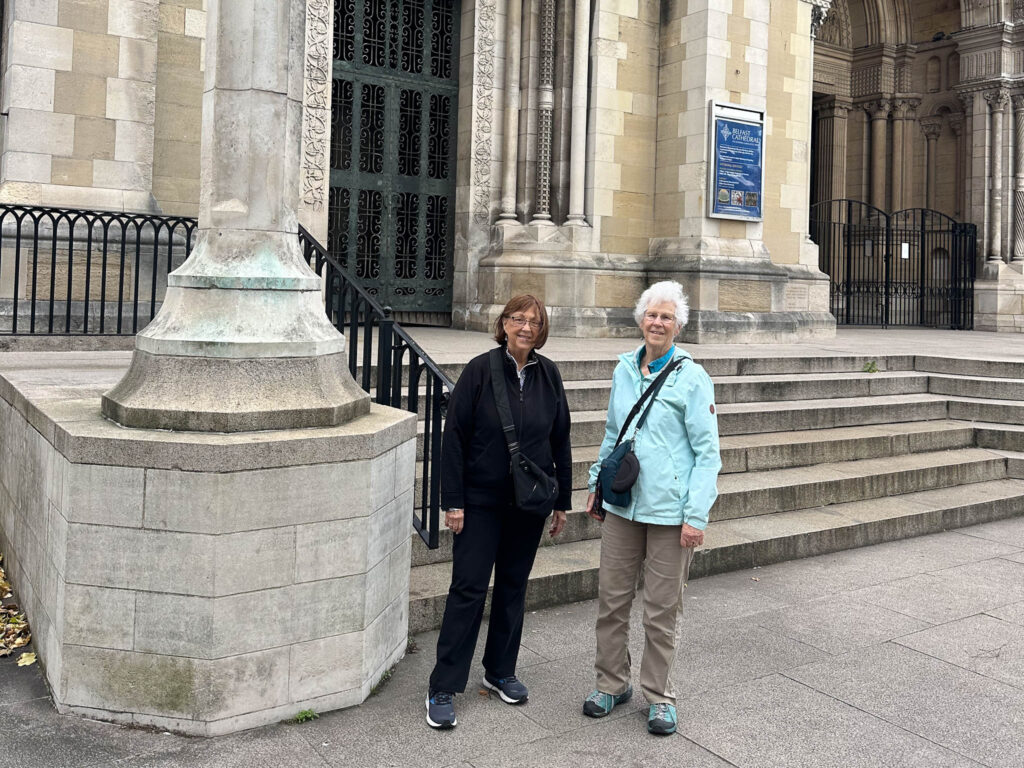
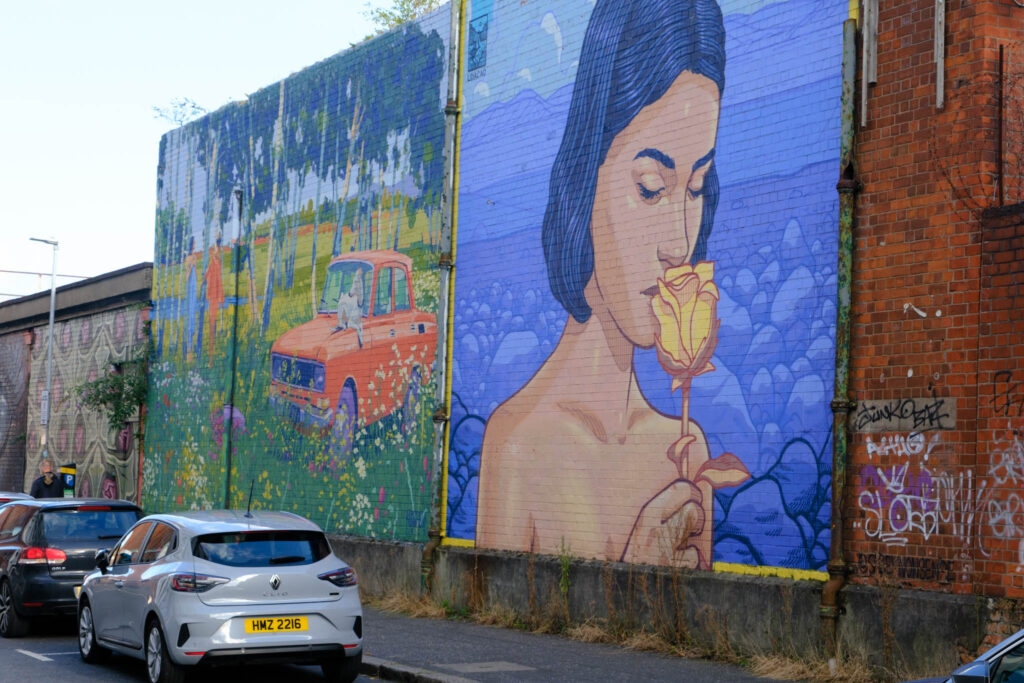
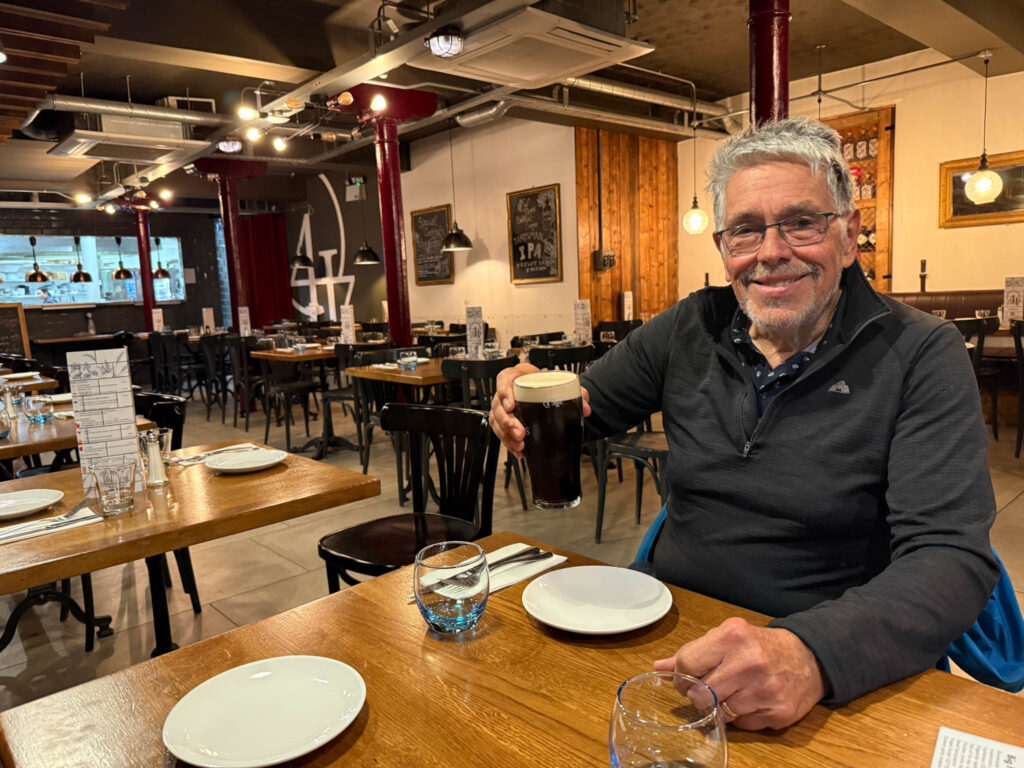
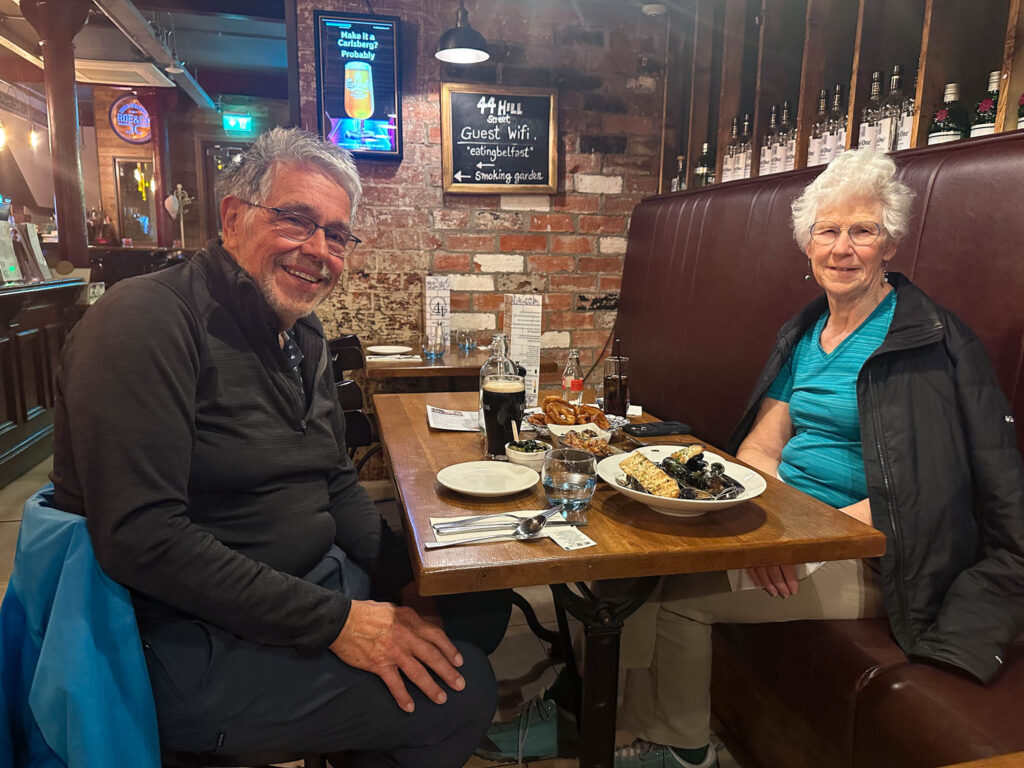
You eat a great deal. The listing of those “murdered” by the loyalist is a constant reminder to those who pass.
Always delightful traveling with you but, my Irish Granny would agree…this has been “the best”!